Asia



Discover the difference
What makes Fujifilm unique is the way we combine both analogue and digital expertise with one goal in mind – to help you grow your business.
Get to know us and you’ll discover our passion for building successful, long-lasting partnerships driven by core values of trust, innovation and sustainability.
Discover the difference at drupa 2024 Hall 8B, Stand A02 Discover More Serving Printing, Packaging and Publishing Industries across Asia Pacific since 1985 Issue 3 2024 PrintINNOVATIONPackaging

9th INTERNATIONAL PACKAGING AND PRINTING EXHIBITION FOR ASIA 10th International Packaging And Printing Exhibition For Asia SOARING TO NEW HEIGHTS www.pack-print.de 17 – 20 Uncovering Total Solutions for the Packaging and Printing Industries The Thai Printing Association For enquiries : Within Thailand Exposis Co., Ltd Tel (66) 2559 0856-8 info@exposis.co.th Overseas Messe Düsseldorf Asia Pte Ltd Tel (65) 6332 9620 ppi@mda.com.sg Jointly organized by : Book Your Booth Space NOW! SEP 2025 BITEC • Bangkok

In this issue

4 What do consumers really think about packaging?
10
Ultimate MPS A-Class Drying Technology for water-based applications!
12 Making it ideal for the visions of photographers and designers
14 Decision to invest in the Fujifilm Jet Press 750S High Speed Model
16 Tetra Pak to cut 300 employees, close Jurong factory (Singapore) as part of consolidation.
18
Reduces global warming potential by approximately 50%
26 Packaging - "Place your bets" - a wave of changes on the horizon
32 How product packaging affects buying decisions
36 “Unfold your potential”: HEIDELBERG at drupa 2024!
38 Jinhao Color Printing upgrades with simultaneous installation of two new presses
42 Inkjet, the great enabler!
46 BOBST revolutionizes flexo printing with oneECG
48 Can an innovative cleaning method reduce the total cost of ownership in digital label printing?
52 “Simple, smart, cost-effective and 100% reliable”
54
ASIAN PACKAGING EXCELLENCE AWARDS:
2024
Issue 3 - 2024
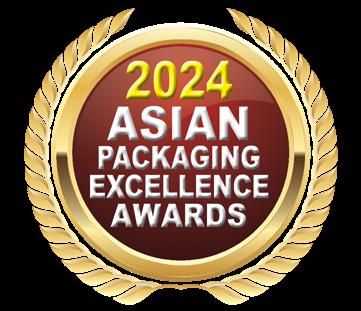
Print - Packaging INNOVATION
Asia Magazine
Published by
Asian Print Awards Management Pte Ltd
65 Chulia Street #46-23
OCBC Centre 049513
Singapore
Print Innovation Asia
Labels and Packaging Innovation Asia
Asian Print Awards
Packageing Excellence Awards
Label and Packaging Conferences
Publisher
Paul Callaghan paul@printinnovationasia.com
Editorial
Elizabeth Liew elizabeth@printinnovationasia.com
Packaging Sales
Elizabeth Liew elizabeth@printinnovationasia.com
New and information from around the region and the world

24th
What do consumers about packaging?
The last in-person drupa took place seven years ago, and the packaging industry and the world have changed dramatically since then. A pandemic, a global economic crisis, a war in Europe, and the ever more obvious effects of global heating becoming clearer have changed the industry landscape beyond recognition.
In this context, how have consumer attitudes towards packaging changed and evolved? I speak to two industry experts to find out more.
Mintel’s recent report, Global Outlook on Sustainability: A Consumer Study 2023 takes an in-depth look at consumers' shifting values and attitudes towards sustainability.
Focus on packaging functionality
Asked about the main priorities consumers have for packaging, the report’s author Richard Cope points out that while sustainability is important, other factors, such as the efficacy of the packaging, take higher priority.
“In our surveys, consumers rated familiarity with the brand and perceived quality of the product as most important. The first packaging topic that came up was product protection at number three, and recyclable and sustainably sourced packaging came fourth.” He has observed a hardening of the lines over the last three years while doing research for the report.
“The proportion of people citing packaging efficacy as most important is going up more than the proportion of people asking for sustainable or recyclable packaging. The main focus is on packaging performing its cardinal
function, protecting the product inside.”
Nataliya Malhanova, Director Innovation & Marketing Communication Materials Group EMENA at Avery Dennison underlines the fact that product and packaging should first and foremost fulfil its core function.
“Only after that comes convenience and ease of use, like with the trend for
inclusive packaging design. Sustainability and the impact a product and packaging have on the environment is the final piece of the puzzle. In an ideal scenario, we delight consumers with safe, appealing, functional, easy to use and sustainable packaging.”
Beware of the value-action gap
When surveyed, people tend to say what they think the interviewer would like to

Print Innovation Asia Issue 3 2024 4
consumers really think packaging?
by Elisabeth Skoda, editor at large at Packaging Europe


hear, rather than what they actually think. This gap also was very evident when asking consumers about their packaging recycling habits, explains Richard Cope.
“In our surveys, 88% of people said, for example, that they wouldn’t do harm to the environment, while when asked if they recycled in the last year, that figure drops down to about 55%. The holy
grail both for brands, companies and governments is to close this gap.”
Mintel’s report looks at what peoples’ emotional touchpoints are and how to use
marketing and information techniques to get people on board.
“We need bold and courageous brands who choose packaging or design packaging based on eco-design and not on consumer perception”
Print Innovation Asia Issue 3 2024 5

“The conclusion from a packaging perspective is that providing clear, contextual information on how to recycle or take action is key. From a marketing point of view, it’s important to remember to tick all the boxes, so that a product is high quality, convenient and performs its primary role. Consumers value sustainability, but it’s important for brands to get the basics right and excel at these before selling into sustainability.”
Linking the product and the consumer
The correct labelling can help guide

consumers in the right direction when it comes to disposing of the packaging correctly, but Ms Malhanova also believes that it’s important to focus on making sure that packaging is created according to eco-design guidelines, and that the infrastructure is being optimised to collect, sort and recycle different types of packaging effectively.
“A Label is a small, yet significant element of the packaging. It is a great communication channel to reach consumers to explain to them different aspects of sustainable design and to encourage good behaviour rather than confuse or make them feel guilty. For example, why not translate ‘climate neutral’ claim into more meaningful information for consumers, or instead of ‘contains plastic’ message guide consumers on how to best recycle a pack. Let’s empower consumers to work together with us on a sustainable future!”
Packaging and in particular labels are the connecting point between brands and consumers, providing product information and conveying shelf appeal.
“Consumers value sustainability, but it’s important for brands to get the basics right and excel at these before selling into sustainability.”
Smart labels using RFID technology or a printed QR code can also boost consumer interaction with a brand and can even provide traceability and transparency on a product’s carbon footprint.
“At Avery Dennison, we are currently running pilots to use a smart label as a communication of a proof point of the carbon footprint of a specific product. We use a smart label and our connected platform, Atma.io, to monitor a product's journey from the source to the consumer. For example, from a label on a wine bottle, the consumer can not only learn about the wine but also the impact this bottle of wine has on the environment,” she adds.
A differentiated look at packaging
A key function of packaging is to attract attention on the shelf. Today, portraying a sustainable image is equally as important to many brands. There has been a noticeable shift towards paper, particularly in the areas of beauty, technology and food.
“One of the reasons for this is compliance, and companies staying ahead of the game on plastic regulation,” explains Richard Cope. “But there is a broad view from consumers that paper is natural and doesn’t have an impact on the environment.”
Print Innovation Asia Issue 3 2024 6





“The amount of plastics in the environment is tremendous, and consumers are aware of this. It is a very emotional topic.”
In the context of this, it’s important to rely on facts and figures when looking at packaging, and LCAs can play an important role here. Plastic packaging can sometimes fare better when looking at the figures, but still has a bad reputation with consumers. Giving a clearer picture will require communication efforts, explains Nataliya Malhanova.
consumer perceptions by choosing paper, but if it doesn’t make sense from ecodesign principles, this does more harm than good. Facts and figures can be used to show consumers where it makes sense to use plastic, and where it is better to switch to alternative packaging materials or refill or returnable solutions. Changing consumer perceptions will be difficult, but we need to be bold and do it where it is right.”
to recycle. A small majority understands that just because something contains recycled content, it can be recycled again. Only a minority realise that liquid cartons and flexible packaging might not be recyclable locally. A lot of work remains to be done, especially since there has not been much progress when we asked the same questions about packaging two years running,” concludes Richard Cope.
It’s clear that the topic of consumer perception around packaging is complex and multi-layered. drupa 2024, and in particular touchpoint packaging will explore the topic of packaging as a touchpoint for consumers in depth. The event series will showcase innovative and
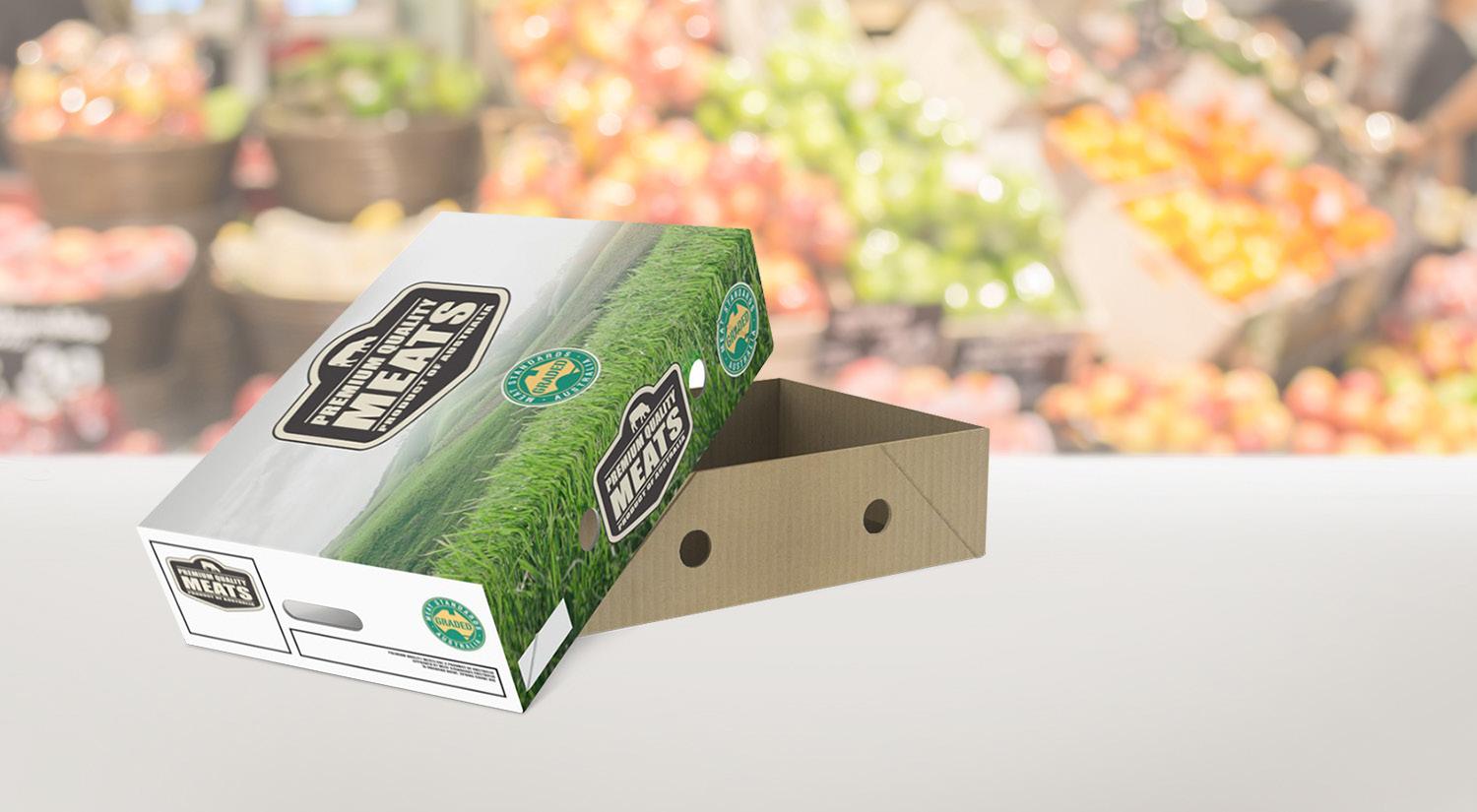
“We have been using plastics for many years without paying much attention to how to dispose of it. As a result of this, the amount of plastics in the environment is tremendous, and consumers are aware of this. It is a very emotional topic.”
However, not following the facts and figures can have adverse effects on overall sustainability, when brands are led by consumer perception and not what is objectively the most sustainable packaging.
“We need bold and courageous brands who choose packaging or design packaging based on eco-design and not on consumer perception. You can satisfy
Dealing with complexity
The Mintel report paints a clear picture in showing that the majority of consumers still don’t understand the complexities of packaging, how to dispose of it and how it can be recycled.
“People don’t necessarily understand that a pack that’s marked as biodegradable or compostable won’t necessarily degrade in the garden, or that not all ocean plastics can be turned into food or beauty grade packaging.
We have however observed that a majority understands that plastic wrapping can extend shelf life and that coloured plastics might be more difficult
eye-catching packaging design concepts and focus on the latest developments in packaging design and production, setting out to be an open platform for all packaging experts engaged in developing future-oriented solutions for packaging.
About the author
Elisabeth Skoda is the editor at large at Packaging Europe. She has over 15 years experience in the packaging industry, and enjoys producing content for a range of different media, from editing Packaging Europe magazines to hosting podcasts as well as webinars and Linkedin Live discussion panels. You can contact her under es@packagingeurope.com or under LinkedIn
Print Innovation Asia Issue 3 2024 8
Unbox faster turnarounds

Make the move to digital – and unbox your business with the flexibility to accommodate fast turns, versioning requests, last minute edits, and changing buying decisions.
With the new EFITM Nozomi 14000 LED digital press for corrugated packaging and POS, you can reduce process steps from weeks and days to hours and minutes. And personalize runs from one to infinity at higher margins and with lower costs – all in a single pass.
Let’s build your brilliant future. Together.
Scan to learn how corrugated converters and packaging printers are opening up new ways to say, “Yes!”



In today’s fast-paced world, sustainability isn’t just a trend –it's a necessity. At MPS Systems, we’re leading the charge towards a greener future with our latest innovation: A-Class Drying Technology.

Ultimate MPS A-Class Drying Technology for water-based applications! 4
Unlocking value through sustainability
Beyond its environmental benefits, MPS A-Class Drying Technology delivers tangible value to businesses. By streamlining production processes and enhancing efficiency, it empowers organizations to boost their bottom line while reducing their carbon footprint. Its versatility and adaptability make it suitable for a wide range of applications, catering to the diverse needs of modern businesses.
This groundbreaking advancement isn’t just about progress; it’s a bold leap towards transforming the print industry into a bastion of sustainability.
The journey towards sustainability
The journey towards sustainability is a multifaceted one, requiring a blend of innovation, dedication and unwavering commitment. For MPS Systems, this journey began with a vision to redefine the traditional paradigms of efficiency and environmental impact within the printing sector. With A-Class Drying Technology, we’ve embarked on a mission to revolutionise the way printing processes are conducted, placing sustainability at the forefront of every endeavour.
Efficiency redefined
At the heart of MPS A-Class Drying Technology lies a fundamental redefinition of efficiency. Introducing a low-pressure, blower dryer concept with pre-heating functionality, we’ve eliminated energy loss in the circuit. This
innovative design allows us to surpass the constraints of conventional high-pressure, compressed air systems, unlocking new levels of efficiency and performance. With a remarkable 70% decrease in energy consumption compared to traditional dryers, our technology sets a new standard for eco-conscious printing processes.
Minimizing environmental impact
In addition to efficiency gains, MPS A-Class drying technology prioritizes environmental responsibility. By using water as a solvent, we significantly reduce harmful emissions during the label production process. This not only contributes to a more sustainable operation but also supports businesses in meeting increasingly stringent environmental standards. With applications spanning across the industries like food and beverage, pharmaceuticals, and personal care products, our technology addresses the growing demand for eco-friendly solutions.

Print Innovation Asia Issue 3 2024 10




Connect to Grow



Unleash your printing potential
Connect to Grow. That is your key to stay ahead in a demanding market. By connecting with MPSConnect, you ensure the best in reliability and productivity from your printing press. You will increase competitive advantages and maximize profits.
To improve productivity and profi tability, it’s critical to increase the understanding of your overall label print operation. With MPSConnect, you get real-time insights in the operator activities. You dive into the printing press and see exactly what’s happening.

















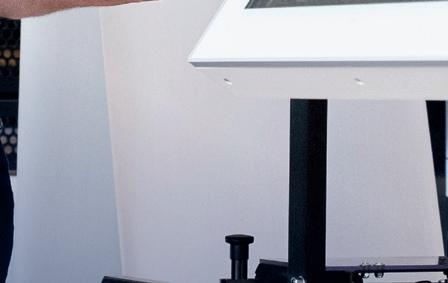

With MPSConnect we see recurring annual cost savings of €50,000 - €100,000 and even more thanks to a more efficient workflow, time management and waste reduction.

mps-printing.com/connect-to-grow






mps-printing.com
Making it ideal for the visions of photographers and designers
Konica Minolta is set to launch the AccurioPress C84hc, following a successful demonstration at its very own Konica Minolta Connect event on 19 January 2024, held at One Farrer Park Singapore.

The AccurioPress C84hc is the successor to the highly acclaimed AccurioPress C83hc, which pioneered new printing demands in fields such as photo business and design with its unique colour reproducibility. Its groundbreaking feature, the adoption of RGB based High Chroma toners, capable of reproducing vivid colours normally seen on digital monitors and LED screens.
Experience Vibrant and True to Life Print Images with The AccurioPress C84hc
The AccurioPress C84hc leverages the broad colour gamut of the High Chroma toner, allowing the reproduction of
colours closely resembling those on RGB monitors. It excels in portraying challenging hues like the purple of a sunset, the pink of flowers, and vibrant greens and blues that are difficult to replicate with CMYK toners. This makes it ideal for conveying the visions of photographers and designers., making it perfect for studio photo printing and photobook production.
Efficient Printing Process Optimisation through a Range of Feature-Rich Options
Equipped with the optional Trimmer Unit (TU-510), the AccurioPress C84hc can simplify paper processes such as four-

side trimming, creasing, and perforation, even in complex printing workflows. Inline post-processing of prints with vivid colour reproduction results in highvalue outputs with optimised efficiency.
Leveraging Digital Printing Advantages
All colour control and front-to-back registration adjustments, previously done manually, can now be automated with the optional Intelligent Quality Optimiser (IQ-501), which assists through monitoring and automatically corrects colour tones alongside the frontto-back registration in real-time. Optimal adjustments can be made quickly by anyone, even without specialised skills. This leads to a reduction in workload and waste, while minimising the man-hours spent on quality control.
The AccurioPress C84hc complements its capabilities with AccurioPro Flux, a suite of digital software solutions for professional printing. This comprehensive suite provides centralised management, automated workflow processing, colour management, seamless integration of various printing technologies, and full connectivity across all Konica Minolta printing systems.
Print Innovation Asia Issue 3 2024 12

Decision to invest in the Fujifilm Jet Press 750S High Speed Model
The company has noted productivity benefits and a reduction in costs six months on from the installation

Based near Milan, Italy, Grafiche Arrara is a distinguished printing company, with a legacy dating back to 1923. With a dedicated team of 11 professionals, the company specialises in an extensive array of products, such as business cards, brochures, postcards, large format printing and direct printing on rigid media. The company also offers graphic design services beyond print production. Grafiche Arrara invested in a Jet Press 750S High Speed Model in June 2023, as the company celebrated its 100th anniversary, marking a proactive step towards digitisation, resulting in multiple benefits.
Fabio Peviani, CEO of Grafiche Arrara comments: “The decision to invest in the Fujifilm Jet Press 750S High Speed Model was prompted by our quest for revitalisation, recognising the transformative potential of replacing old equipment with cutting-edge technology.”
The installation is not Grafiche Arrara’s first experience working Fujifilm, having previously invested in an Acuity LED 1600, a testament to their trust in Fujifilm’s technology and support.
Mr. Peviani comments: “The integration of the Jet Press 750S High Speed Model, marks a step into commercial inkjet technology for us. It has significantly improved our overall production efficiency, speeding up the printing of jobs that previously required plate making, offset start-ups, and external processing.”
“Six months on from the installation, we would highly recommend the Jet Press 750S High Speed Model. Its outstanding print quality and the reduced costs it offers were key advantages of the Jet Press, compared to competitor machines”.
Mr. Peviani comments: “Customer feedback reflects high satisfaction with the quality of products produced by the Jet Press 750S High Speed Model. Customers have not been able to distinguish the difference, compared to offset, at all.”
Recognising the persistent challenges in the industry, including competition from online printing and the need for increased print speeds, Grafiche Arrara asserts that its new machine and collaboration with Fujifilm will effectively tackle these issues.
Mr. Peviani adds: “Along with the Jet Press 750S High Speed Model, our relationship with Fujifilm helps us to attract new customers, deliver superior, highly productive, high quality print, and increases our competitiveness in the industry. We know that we can tackle such challenges confidently and continue growing as a company.”
Taro Aoki, Head of Digital Press Solutions, Fujifilm Europe comments: “The installation of the Fujifilm Jet Press 750S High Speed Model by Grafiche Arrara is a significant milestone that aligns seamlessly with their impressive century-long commitment to innovation and sustained growth. We at Fujifilm are not just providers of cutting-edge technology; we are proud partners in Grafiche Arrara’s journey towards enhancing its printing capabilities. This partnership underscores our shared vision for pushing the boundaries of what’s possible in print technology and empowering businesses to thrive in a dynamic market. We look forward to continued collaboration and success with Grafiche Arrara as they enter a new era of efficiency and excellence.”
Print Innovation Asia Issue 3 2024 14
Brilliant products and services for brilliant print results and business success.


XSYS remains one of the largest suppliers for the global flexographic printing industry, offering flexographic and prepress solutions and expert professional services while helping the industry move forward with increasing innovation, improved productivity and a reduced environmental footprint.
www.xsysglobal.com
Tetra Pak to cut 300 employees, close Jurong factory (Singapore) as part of consolidation.
Tetra Pak will also relocate its corporate office to a new location in Singapore. It will be one of its largest offices in Asia Pacific with a capacity of up to 300 people.

About 300 Tetra Pak employees will be retrenched as the company moves to close its Jurong factory as part of plans to consolidate production into its other facilities in the region.
This shift will take place over the next 12 months, Tetra Pak said in a press release on Tuesday (Feb 27).
The food processing and packaging solutions company said employees were informed of the decision earlier the same day and that discussions have been set up throughout the week to “offer new opportunities or outplacement support”
“Tetra Pak is committed to supporting all impacted employees by delivering above and beyond all applicable statutory requirements and ensuring they are treated with the utmost respect and care, in line with company values.”
“We understand and recognise that this is not easy for our employees. The company has weighed every option to create the best social package for them. Our priority was to ensure that every single employee would be well taken care of, said the company. “We will be offering an enhanced social package to employees whose roles are directly impacted, in line
with our internal policy and including the statutory redundancy requirements.”
Tetra Pak said further details and the package terms according to roles and positions will be provided one-on-one between each employee with the human resources team.
OPERATIONAL COST EFFICIENCY
The Tetra Pak Packaging Materials factory in Jurong started operations in 1982, supplying customers in Singapore and serving as an export base. It was one of Tetra Pak's largest packaging materials factories in the world. It lists Pokka, Yeo's, Fonterra, Nestle and F&N among its business partners. “However, with market dynamics changing significantly over the past decades, the company recognises the need to adapt in order to maintain competitiveness. Striking a delicate balance between market demands, industrial footprint optimisation, and operational cost efficiency is paramount,” it said.
The company consulted the Food, Drinks and Allied Workers Union (FDAWU) ahead of the announcement and said that it will also leverage NTUC's e2i (Employment and Employability Institute), with support from Workforce
Singapore (WSG) and NTUC LearningHub (NTUC LHUB), to host a job fair to support career conversion with different companies and provide onsite training.
“The company will also engage with employees keen to apply for other positions in Tetra Pak, locally or in the region,” it added.
FDAWU said in a separate statement that the affected workers will receive retrenchment support packages in line with unionised norms.
Affected workers will additionally benefit from numerous “good practices”, both monetary and non-monetary, following the union’s discussions with the company. “Through FDAWU’s close working relationship with Tetra Pak, the company gave early notification of the consolidation exercise and coordinated with us to provide adequate support to retrenched workers and facilitate job opportunities for affected workers,” said the union’s general secretary Tan Hock Soon.
Concurrent with the consolidation exercise, Tetra Pak will relocate its corporate office to a new location in Singapore by the end of this year. It will be one of its largest offices in Asia Pacific with a capacity of up to 250 people. “The company will maintain a strong business presence in Singapore to support its global growth with core operational functions, including business management, project centres, IT, human resources, finance and marketing functions.”
Tetra Pak has more than 24,000 employees worldwide. Its regional presence includes offices or facilities in Malaysia, Thailand, Vietnam and Indonesia.
Print Innovation Asia Issue 3 2024 16

























Glunz& Jensen A/S (Headquarters) Selandia Park 1 4100 Ringsted Denmark +45 5768 8181 gj@glunz-jensen.com Glunz& Jensen s.r.o Kosicka, 50 08001 Prešov, Slovakia +421 51 7563811 gj@glunz-jensen.com Glunz& Jensen Inc 2185 Hwy 292 Inman SC 23349 USA +1 864 568 4638 gj-americas@glunz-jensen.com ww w .g l u n z - je n se n . co m With a footprint of just 17 sqm (183 sqfeet) FlexiLine 520 Compact makes flexographic platemaking automation a service within everyone's reach. Forget the crazy prices of the competition and Flex Line 520 Compact The greatest innovation since the invention of the flowlines... ask G&J for an offer.
Reduces global warming potential by approximately 50%
EFI Completes Life Cycle Assessment for Nozomi Digital Direct-to-Corrugated
Printer
Electronics For Imaging, has reported it has completed a life cycle assessment (LCA) of Nozomi single-pass digital print technology in partnership with awardwinning sustainability consulting firm Clean Agency.

Through this initiative, Clean Agency also developed an LCA tool that EFI™ customers and their customers – such as brands, retailers, and 3PLs – can use to analyze their CO2 equivalent (CO2e) emissions as part of their overall packaging extended producer responsibility (EPR): the environmental impact of their products, even after their useful life has ended.
According to the LCA, printing corrugated materials on an EFI Nozomi digital press reduces global warming potential (GWP) by approximately 50% when compared to analog printing technologies. “No printing plates, less energy, less waste, and just-in-time (JIT) manufacturing all contribute to CO2e reductions for corrugated printing on EFI’s Nozomi digital press,” says Seri McClendon, CEO of Clean Agency. “Packaging is a major contributor to Scope 3 emissions, so we not only partnered with EFI to conduct the LCA but also to build a calculator that enables users to quantify related kilograms of CO2e for specific packaging printing volumes and applications.” Scope 3 emissions refer to indirect emissions that occur in the value chain of an organization, including both upstream and downstream activities, and represent a significant portion of a company's carbon footprint.
For prospective customers, brands, and retailers, the LCA tool can calculate the CO2e of a given print job on
Nozomi technology, as well as project and compare what the same job would generate on other printing technologies, including flexography, offset litho, and digital pre-print. Demonstrating reduced footprint of packaging production is a business advantage in a time where Scope 3 emissions are a critical consideration in comprehensive sustainability strategies. In addition, these sustainable advantages of digital print also enhance productivity and business outcomes – such as through the elimination of plates, reduction of changeover waste, lowered energy, waste disposal costs, and more.
“The insights substantiate digital print’s positive impact on sustainability as well as our overall commitment to our own and our customers’ sustainability goals,” Matteucci said. “The LCA tool is a key value proposition for all users, as the ability to demonstrate clear footprint reductions not only aligns with ethical values but also enhances brand reputation and competitiveness in the market.”
EFI customers have already begun to leverage the new LCA tool with positive reception. UK-based leading corrugator and packaging provider Caps Cases has completed its own LCA analysis. Because of their Nozomi investment in EFI digital printing, in 2023, Caps Cases avoided approximately 300,000 kilograms of CO2e when compared to analog methods.
“EFI’s investment in this LCA calculator will help us quantify and communicate Scope 3 emission reductions to the brands and retailers we serve,” said Trevor Bissett, CEO of Caps Cases. “In fact, according to our calculations, our largest customer avoided 60,000 kilograms of CO2e by switching to Nozomi digitally printed packaging in 2023. To have the ability to communicate this calculation and its impact provides a strong testimonial for our digital print solutions and indicates our commitment to being a sustainable manufacturer.”
EFI Nozomi technology: a path to sustainability
The LCA tool is the latest development in the history of EFI Nozomi technology pushing the corrugated printing industry in a significantly more sustainable direction. Eliminating expenses and a great number of steps associated with printing plates, printing, and lamination in traditional analog production, single-pass digital inkjet printing for corrugated packaging contributes to a circular economy thanks to a reduction of overproduction, waste, and storage costs, LED curing that reduces power consumption, and the elimination of water to wash presses and inks.
EFI Nozomi LED inks emit virtually no volatile organic compounds (VOCs), meeting the GREENGUARD Gold standard and requiring no vapor recovery.
Print Innovation Asia Issue 3 2024 18

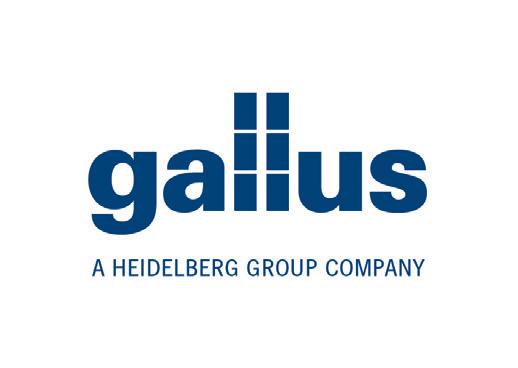


Print Innovation Asia Issue 3 2024

2024 ENTRY FORM
4


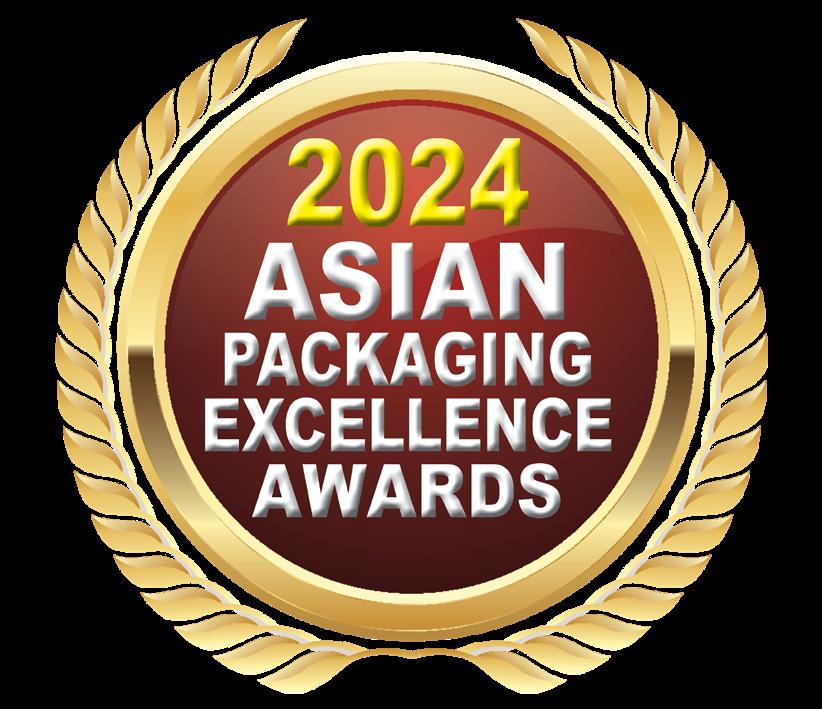

Flexo Gravure Offset Digital Embellishment Hybrid Mockup Labels All Process THE 2024 ASIAN PAC GING EXCELLENCE AWARDS YOUR FREE ENTRY FORM SEE INSIDE ON HOW TO ENTER WITH ALL THE CATEGORIES CLOSES SEPTEMBER 27TH 2024 Design Win Gold Asia
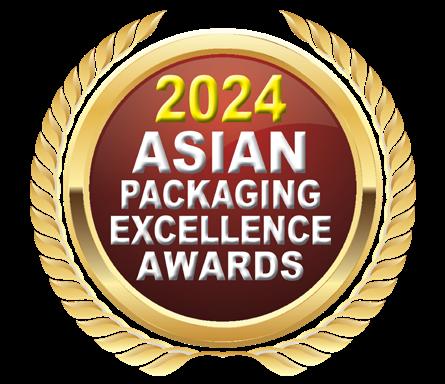
THE 2024 ASIAN PACKAGING
EXCELLENCE AWARDS
Singapore - Malaysia - Hong Kong - China - Thailand - Vietnam - Japan - Korea - Indonesia - Philippines - IndiaPakistan - Cambodia - Taiwan - Bangladesh - Sri Lanka - Myanmar - Brunei
The Asian Packaging Excellence Awards is the only regional Independent Packaging Print competition. Since 2001, awarding Gold Silver and Bronze for packaging printers who have excelled in producing world class quality. The judges are non-supplier but are retired educators or production professionals and come from all over Asia/Europe/Australia.
* We MUST have 2 consecutive samples for each job in ALL catergories you enter (If 1 is damaged)
* ONLY 3 jobs allowed for each catergory that you enter.
FLEXO
1. Narrow Web Flexo (up to 500mm width only)
1a Paper/Board
1.b Film
2. Mid Web Flexo (501mm to 914mm width only)
2a .Paper/Bpard
2b Film
3. Wide Web Flexo (915mm and over)
3a . Paper/Board
3b Film
4.Carton & Cups
5.Post Print for Corrugated
6.Pre Print for Corrugated


LABELS
1. Flexo
2. Letterpress
3. Offset Labels
4. Gravure Labels
5. Combination Printing (Many different processes)
6. Non Pressure Sensitive material
7.Digital Labels
7a. Up to 4 colours
7b. 4 to 5 colours
7c. 5 to 6 colours
7d. 7 + Colours
GRAVURE
1. Paper/Board
2. Metallised Paper/ Aluminium Foil Surface Print
3. Film
3a.. Surface Print
3b. Reversive Print
4.Speciality Gravure (Must provide written explanation)
OTHER PROCESS
6. Embellishment
7 Mockup/Sample
8 Digital Packaging
9 Hybrid Printing
10 Offset Packaging
WIN THE BEST IN SHOW 2024 AWARD
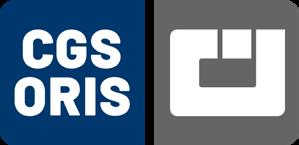












THIS IS YOU FREE ENTRY FORM. PLEASE WRITE CLEARLY SO WE CAN READ IT
PLEASE READ: Asian Packaging Excellence Awards are open to all packaging compnaies across Asia. It is free to enter and winners will be presented Gold Silver Bronze awards live on stage in Vietnam 8th November 2024. If you do not attend, we will not send awards to you. Jobs must have been produced from November 2023 till September 20th 2024.
*Web Width ___________________Other detials_______________________________________
If you would like to supply more information, please attach this to Section A above
Please send your entries to: Send your best work to: ATT Asian Packaging Excellence Awards
DEADLINETOENTER27thSEPTEMBER24
A - This is seen by the Judges ONLY 3 JOBS PER CATERGORY
5 FLEXO 5 LABELS 5 GRAVURE 5 MOCKUP 5 DIGITAL PACKAGING 5 HYBRID 5 OFFSET PACKAGING
_______________e-mail ______________________ Name
Company_______________________
________________________________Signature_____________________________ _ _ _ _ _ # _ _ _ _ _ _ _ _ _ _ # _ _ _ _ _ _ _ _ _ _ # _ _ _ _ _ SECTION B - CUT AND TAPE THIS TO THE BACK OF THE JOB ENRTY - *fill out each process
Entered_____________Print Method_______________Number of colours__________
of Machine *Ink Supplier
*Tape Supplier
Free ENTRY FORM SECTION
PLEASE SELECT
Catergory Entered for this job (See catergories opposite page) Company Name_____________________________Contact Person________________________ Compnay Address________________________________________________________________ Country________________Contact Number
of Entry_____________________________Printing
Your Name
Catergory
*Brand
*Plate Supplier
*Printed
*Pre Press by
Quanity
*Paper/Board/Film/Label supplier
c/o
PRINT & MEDIA ASSOCIATION OF SINGAPORE
Centre, #04-07,
627A Aljunied Road, Biztech
Singapore, 389842
Telephone: +65 6336 4227

THE SHIFT 24 Conference will be held in Ho Chi Minh Vietnam on the 7th and 8th November 2024 and the Asian Packaging Excellence Awards dinner will be the 8th after the SHIFT Conference
The SHIFT 24 conference (now in its 21st year) is designed to give Packaging companies, no matter what area of production they are involved in, a view on the trends and technologies that effect business today.
Supported by the leading manufacturers and suppliers, the event offers you the chance to hear from world leading speakers on a whole range of industry topics. Also meet and network with other companies like yours at this intensive one-day event.
More detailed information will be available in the coming weeks so mark this date in your calendar, 7-8th November 24, Ho Chi Minh - Vietnam..
And if you enter the Asian Packaging Excellence Awards, we hope to see you on stage receiving your Awards for excellence in packaging live on stage. See you then!
VIETNAM






Packaging - "Place your bets" - a wave of changes on the horizon
By François Martin – Graphics Industry & Communication Consultant
For decades, the packaging industry has operated behind the scenes, driven by the things we encounter every day, some of which rely on machinery and processes established over 50 years ago, the industry has recently stepped into the spotlight.

While the saying "out of sight, out of mind" has applied well to this industry, it is now facing significant changes that could have occurred independently but have now converged.
The convergence of conjunctural and structural elements is reshaping the packaging industry. While these elements may not fundamentally challenge an industry known for its resilience, they are compelling all players to embrace change. Let's start with the conjunctural elements that are evident and notably impacting profit margins.
Increase in energy and raw material prices. The significant price hikes, even when passed on to customers, are

not sustainable in the long run. It is imperative for converters to implement energy-efficient production lines. Equally important is quality control and waste reduction. For machine manufacturers, after implementing notable price increases in 2021 and 2022, they now revamp their offering behind one simple motto: automation. We will look into this further later on.
Scarcity of labor and qualification of employees. The packaging industry remains relatively unknown to the general public. If we were to survey individuals with no professional or family ties to the industry, they would likely perceive it as a traditional and noisy sector. Furthermore, packaging is often seen as polluting and environmentally unfriendly.
However, the advent of digital machinery and AI presents opportunities for packaging manufacturers to offer new careers and reshape their image to attract fresh talent.
Print Innovation Asia Issue 3 2024 26








Now let's delve into the structural topics:
Proliferation of short print runs. The growth of short print runs is expected to accelerate in the coming years. Brands manage increasingly diverse product portfolios, and sales forecasting has become more complex. The concept of "on-demand production" is becoming the norm. Additionally, promotional and event-based packaging, which often has a short lifespan, contributes to this trend. Furthermore, frequent regulatory changes require brands to update packaging information, necessitating new printing plates each time.
Evolving role of packaging. Packaging is no longer just about protection; it plays a crucial role in enticing customers, informing consumers, and optimizing the supply chain. As a result, new designs, customization, QR codes, and serialization are becoming increasingly common. These new responsibilities
lead to more sophisticated and everchanging print runs, contributing to the reduction of run lengths across all types of packaging.
Design and miniaturization. Design is gaining increasing importance for consumers and brands alike. Appealing design attracts consumers, while miniaturization reduces material consumption, environmental impact, and costs. These trends require more frequent design iterations and higher-performing machines capable of producing more complex formats.
New regulations. Brands and retailers are required to be transparent about the composition and origin of their packaging. Communication about materials used, recycled content, and recyclability can render certain packaging types and the machines producing them obsolete. Many large brand owners made significant pledges towards recyclable
packaging by 2025. The clock is ticking.
Environmental responsibility.
With growing concerns about the environmental impact of packaging, there is a shift from plastic to paper/ cardboard and the development of new mono-component substrates for easier recycling. However, the challenge lies in the existence of recycling infrastructure. Packaging manufacturers need to implement industrial production processes capable of handling these new materials across coating, vacuum metallizing, printing, and lamination to the manufacture of final packages with proper sealing and opening features.
So, what’s next?
Combining the conjunctural and structural elements, it becomes apparent that the packaging industry will face numerous significant challenges. It must evolve to become more flexible, responsive, and adaptive. In this context, what are the opportunities and upcoming changes?
Automation and quality control. The increasing trend towards automation allows for the reduction of scarce and costly skilled labor. It also helps minimize errors and waste. Machines equipped with quality control systems – eg AVT, ACCUCHECK can rectify shortcomings or halt production. With the integration of AI, these systems will make significant

Print Innovation Asia Issue 3 2024 28
Print the future green!
































HELIOSTAR
Ready to print MDO-PE
Highest quality with best register
Connected to RUBY to digitize the value chain ... and many more!

Windmöller & Hölscher KG
Lengerich / Germany
Phone + 49 5481 14 - 0 · info@wuh-group.com
www.wh.group/int/en/











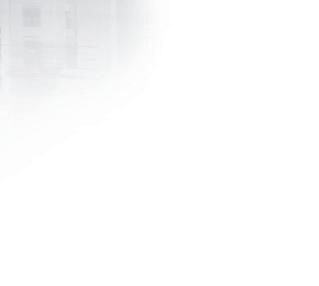











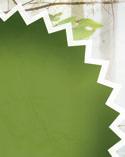






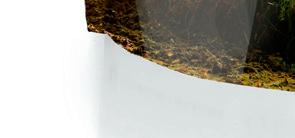
Best profitability at printing speeds up to 600 m/min. and fast job changes












Print Innovation Asia Issue 3 2024 EXTRUSION | PRINTING | CONVERTING
100% sustainable

progress, enabling machine operators to supervise multiple machines with very limited physical intervention.
Digitalization. While the digitalization of labeling has become prevalent, the folding carton, corrugated board and flexible packaging sectors are still relatively hesitant. However, the global threshold of 100 digital presses for corrugated board packaging was crossed by the end of 2022, indicating a shift towards digitalization adoption. The overall packaging digital transformation extends beyond printing and encompasses embellishment and cutting such as Highcon, SEI Laser, MGI, Jetfx. Although current solutions may not yet match the productivity levels of conventional technologies, they are necessary to optimize overall production and allow conventional equipment to focus what they are designed for meaning medium and long print runs.
Digital technologies are an incredible tool, not a threat, and it will intelligently complement conventional technologies that will persist for decades. We will also see the rise of hybrid solutions combining the best of both worlds. Many label converters and commercial printing companies can testify to the advantages of digital technology. The adage "we fear what we do not know" remains true in most industries.
Workflow management. It has become the nerve center of packaging manufacturers. From order placement to pre-press, production, quality control, and invoicing, optimizing the flow of production and processes and mastering workflow management are fundamental. data-driven processes, leading to greater
operational efficiency and optimized resource allocation are now required for faster-time to market and more flexibility. And the advent of AI will further enhance the power of software tools and machines for an ultimate flexibility including preventive maintenance.
The challenge lies in employees' ability to effectively manage the provided information, and management's willingness to validate recommendations from intelligent systems. At drupa, visiting ESKO, Hybrid Software and others will be a must and probably where you will touch the future the most.
Web-to-Packaging and new business models. Digitalization and automation are gradually leading us towards factories managed by robots operating day and night with minimal human intervention. Major packaging equipment manufacturers are investing in or acquiring robotics companies – eg Durst and BOBST. Within less than five years, factories producing packaging in an "Industry 4.0" format will become a reality. Although these dark factories will only address a small portion of production, the course has been set. Last, new technologies enable new players to build new business models offering services not available before.
New entrants and consolidation. The packaging industry provides an opportunity for players from the declining commercial printing industry to enter new markets. These printers are wellversed in the digital realm and skilled in managing sophisticated workflows with optimized margins. While they may not have all the necessary equipment for mass
packaging production, their focus will be on short and personalized packaging print runs, typical in commercial printing. Furthermore, consolidation within the packaging industry will continue. Significant investments are required in all sectors, and expertise needs to be enriched with new skills, facilitating acquisitions and mergers.
In the table below, we can gain a clear idea of the dynamics of the packaging markets. Recently shared figures at dscoop demonstrate overall global growth, with digital technologies experiencing a more pronounced increase.
In a growing global market, equipment manufacturers will support printers and converters with more connected, digitalized, and automated machinery. drupa 24 will provide opportunities to validate new directions and the relevance of innovations that address the industry's challenges. At drupa 2024, four words “connectivity, digitalization, automation, sustainability” will be everywhere. Not to mention AI and eventually, drupa will become drupai.
The key challenges for all stakeholders in the packaging industry will be managing growth, addressing more complex packaging formats, overcoming environmental constraints, implementing new regulations, attracting new talent to the industry, developing new business models like web-to-pack, and welcoming new entrants from the commercial printing world.
"Ladies and gentlemen, place your bets. No more bets, please."
About the author
François Martin is a freelance consultant in graphic industry. He is specialized in the digitalization of production processes. He believes that the changes to come are bigger than the one who already took place and his focus is on educating Manufacturers and Printers & Converters to embrace the digital transformation. He worked for HewlettPackard, Michelin, HP and BOBST driving new businesses.


T he ne xt big t h i ng. In Flexo.
Desig ned to ma ke t he most of you r t i me: Ou r new Boa rd ma ster combi nes non- stop produc t ion w it h ea s y operat ion for a new e x per ience i n fle xo pr i nt i ng. › heidelber g.com/boardmaster

Level up
Zero changeover time and non-stop productivit y for maximum ef ficiency.
Heidelber ger Druck maschinen AG Ku r f ue r ste n -A n l age 52 – 6 0, 69 11 5 He ide lb e rg, G e r m a ny Phone +49 62 21 92 - 0 0, he ide lb e rg com
O c t 2 0 2 2 Heidelberg Asia Pte Ltd 159 Kampong Ampat, #05-02 Paeonia Place, Singapore 368328 Phone +65 6929 5320, heidelberg.com/sg
How product packaging affects buying decisions
When the shelf is stuffed with many similar products from different brands, packaging design can just as important as the product inside. But how much does packaging really affect what choice we make when shopping?

First impressions matter. An infographic by The Paper Worker shows that this applies to product packaging as well. When the shelf is stuffed with many similar products from different brands, it can be the crucial factor for a purchasing decision. But how much does packaging really affect what choice we make when shopping?
In fact, brands have about seven seconds to make a good impression on a potential buyer. Not only does effective design let the consumer make decisions faster and easier, an eye-catching look can also draw consumer attention. Research shows that at least a third of product decisionmaking is based on packaging, along with personal preferences. This means that sometimes packaging can be just as important as the product inside.
The easiest way to catch attention is the right choice of color. It is the most straightforward and simple way to unify a brand and set you visually apart from costumers. However, shades need to be attractive to the target market and set the right tone to send a message of what a
product is. For example, yellow tends to convey happiness whereas black means power control.
But it’s not only about the quick, first impression. Quality is an important aspect as well. According to the infographic, 52 % of online consumers say they would likely return to a business for another purchase if they receive products in premium packaging. And 90 % of consumers reuse product packaging boxes and bags after purchase. But the costumer can even become another marketing channel: 40 % would share a photo of packaging if it is interesting. With that action they recommend it to friends who then might become costumers as well
The third way to stick out on the shelf is to be green: Sustainable packaging is popular among today’s costumers. Thus, recycled or recyclable materials are a bonus for businesses and environment. It doesn’t mean it has to be dull and boring. You can be crafty and creative by for example reinventing old materials like paper lunch bags.
But with all these factors, one thing has to be kept in mind: We’re still dealing with packaging and therefore something that is meant to be functional. It has to be easily mobile, include only necessary text and most importantly protect the product on the inside. Packaging should also help consumers know who your brand is. When a consumer sees a package, in the best case the brand should be able to be named.
Some brands actually managed to make their packaging the most important part of their branding. What would Coca Cola be without their iconic bottle that has even become a retro design feature? But the company also pushes forward innovative and sustainable packaging. For example, for one campaign they created a type of can that had ice cube images appear when the soda reached optimal temperature. Another bottle line was made out of plant material. And printing consumer names on the labels even turned choosing a coke into a sort of game.
For energy drinks, package design even seems to be the most important weapon as a recent study on consumer perception of brands by marketing technology company Affinnova showed. This category has been dominated by Red Bull and Monster for years. Despite Coca-Cola and Pepsi’s heavy spending in advertising and distribution advantages, their brands have been unable to gain share. Affinnova found that Nos and Amp’s package designs are the main reason for that as they fail to attract consumers‘ attention. In particular, Nos and Amp performed poorly on package design personality, meaning that consumers didn’t associate their packaging with any strong brand characteristics.
Print Innovation Asia Issue 3 2024 32


CONGRATULATIO N S 2023
We are thrilled to announce that our innovation has been recognized by Good Design Award 2023 for our two outstanding production color printers — Revoria Press PC1120 & ApeosPro Series!

Production Color Printer ApeosPro Series

Production






Color Printer Revoria Press PC1120
Find out more Find out more Revoria Press PC1120 ApeosPro Series








“Unfold your potential”: HEIDELBERG
An absolute highlight in the industry is coming up in a few months: drupa 2024! The world's leading trade fair for printing technologies is opening its doors, and HEIDELBERG will be there with its leading innovations under the motto “unfold your potential”.
This is not just a trade fair, but a unique opportunity for the industry to learn about the latest trends and technologies. drupa is the place where innovations are born, and ideas become successes. The trade fair focuses on the megatrends of sustainability and digitalization. In Düsseldorf, customers can expect exciting new products in the packaging and print segment with a focus on industrialized print production.
HEIDELEBRG will be looking at the entire production workflow from prepress to postpress, from offset and digital to inline flexo printing. In daily shows, the company addresses the current challenges of the industry and present tailor-made products and services from HEIDELBERG. At the drupa location in Wiesloch, customers can expect the complete HEIDELBERG product portfolio in the Print Media Center.
What new innovations will there be in the printing industry at drupa 2024?
As the market leader, HEIDELBERG is concentrating on the current challenges facing the industry: How can I produce more efficiently and therefore more costeffectively? How can I respond to the shortage of skilled workers? How can I operate sustainably yet economically? And how can I take advantage of digitalization?
HEIDELBERG will be presenting solutions to these challenges at this year's drupa. Enormous competitive pressure is forcing customers to reduce their costs.
HEIDELBERG will be presenting several innovations that increase productivity and reduce the cost per printed sheet in high-volume printing.
The company is addressing the shortage of labour and skilled workers by further automating and digitalizing the print
shop value chain and will be presenting the further developed "push-to-stop" technology and Prinect workflow software solution. And finally, HEIDELBERG help its customers to improve the sustainability of their businesses and their products and presents technologies that help to save energy and reduce the consumption of raw materials. In summary, HEIDELBERG is committed to maintaining its technology leadership in the printing sector by addressing the major challenges of modern printing.
Future forecasts on the topics of sustainability and digitalization
Sustainability in print production is one of the biggest trends worldwide and at the same time a major challenge for our industry. In modern print shops, the aim is to reduce the energy and resource consumption in order to become even more sustainable. But printed products are also changing, moving
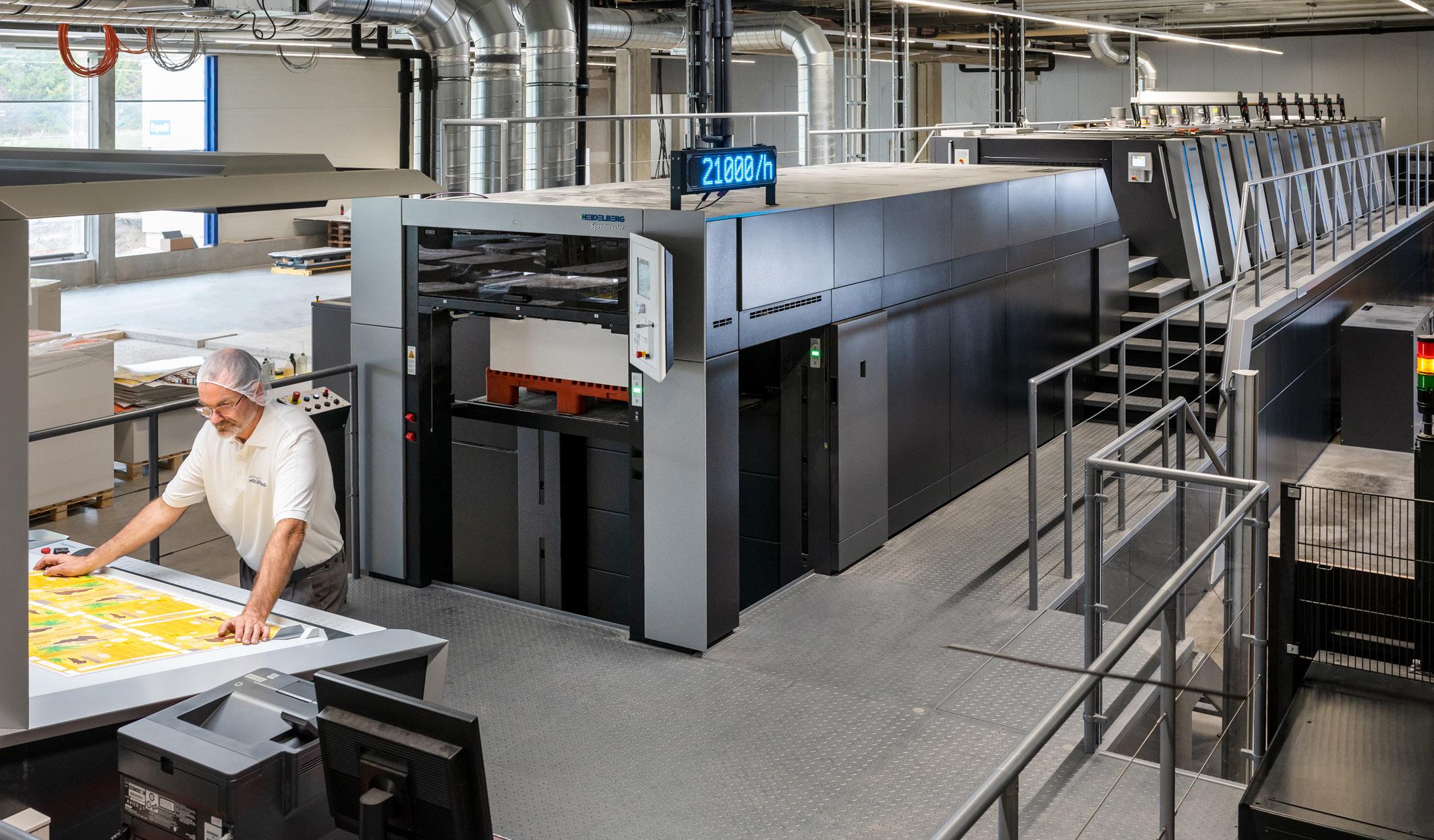
Print Innovation Asia Issue 3 2024 36
HEIDELBERG at drupa 2024!

away from plastic and towards more paper. But HEIDELBERG also has its own corporate goals when it comes to sustainability. The goal is to achieve the smallest ecological footprint across the entire value chain in the printing industry.
HEIDELBERG has been an industry pioneer in the digitalization of printing for 20 years. The main goal is to optimize the customers' entire value chain.
To this end, HEIDELBRG has fully digitalized and integrated the processes and thus offer customers maximum efficiency in industrial print production, which ultimately leads to higher productivity and a reduction in costs. In the area of digitalization, HEIDELBERG offers stand-alone end-to-end solutions for both commercial and packaging customers. So put HEIDELBERG on your list if you are looking for highly digitalized intelligent workflows at drupa.
Implementation of the topic’s sustainability and digitalization HEIDELBERG offers sustainable printing solutions. The company supports its customers in saving energy and raw materials. If you compare a Speedmaster from 1990 with today's version, energy consumption per 1000 sheet has been reduced by up to 40 percent. At this year's drupa, HEIDELEBRG will be presenting the latest generation of presses with a
maximum speed of up to 21,000 sheets per hour. This increase in production speed will help customers to further reduce the energy consumption per sheet. But speed alone is not enough. The company has to take a holistic view of the machines. A good example of this is the Boardmaster flexographic printing machine. Thanks to the flying job change, the system works
with very little waste. The water-based inks also improve the environmental balance. So from a product perspective, sustainability goes hand in hand: Energy efficiency, intelligent automation and environmentally conscious consumables.
With regard to digitalization, HEIDELBERG is investing heavily in software solutions for integrated print production. Lean processes in the print shop and a highly automated control system help to make production more efficient. One example is the new HEIDELBERG customer portal. The digital all-in-one portal offers easy access to production and workflow apps, analytics, service and maintenance, material purchasing and administration tools. In the future, users will also benefit from other apps that automate the production workflow - for both digital and offset printing.
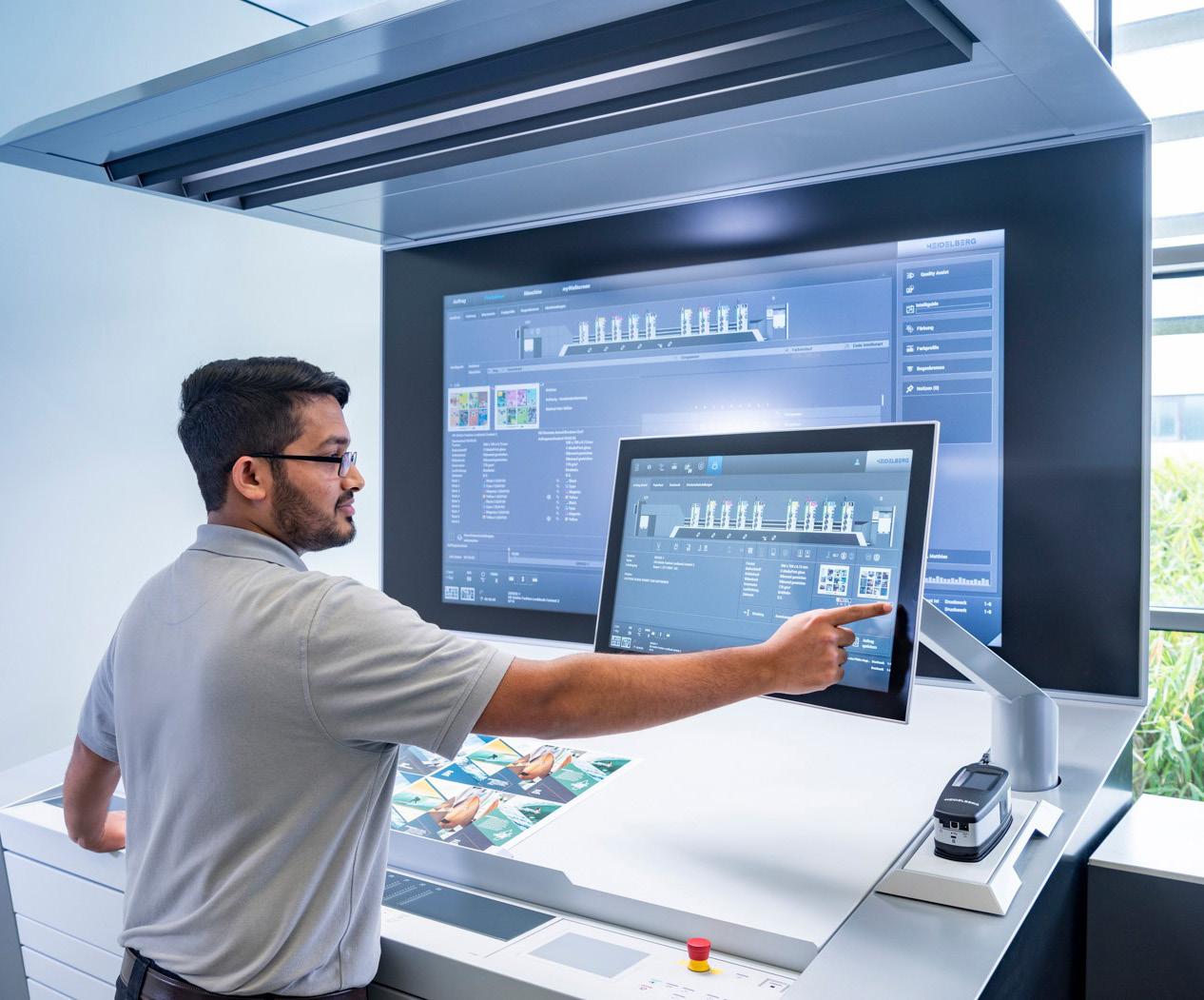
Print Innovation Asia Issue 3 2024 37
Jinhao Color Printing upgrades with simultaneous installation of two new presses
Shenzhen Jinhao Color Printing, located in Shenzhen, China, is a global company that provides one-stop solutions for books and magazines to domestic and international publishers.
The company has now installed two Lithrone GX40RP advance presses in its new factory, continuing its business expansion.
Jinhao Color Printing specializes in various types of books, including children's books, card sets, children's card books, paper craft books, and notebooks. Taking advantage of the integration of manufacturing and logistics that utilizes the advanced equipment in their own factories, Jinhao has developed a global service network and a convenient, competitive, community-based customer service system.
The relationship with Komori started in 2012. President Liu Xianglan says, "Since the establishment of the company, Komori has supported our development. Currently, we own three RP presses, one SP press, four four-color presses, and two two-color presses from Komori as well as MBO paper folders. Komori's offset printing presses and MBO folders are easy to operate, production efficiency is very high, and the machines offer high stability." Regarding the introduction of

the Lithrone GX40RP advance, she adds, "In 2021, we moved to a site that is three times larger and expanded our facilities. We significantly increased production capacity by installing two GX40RP advance presses at the same time."
Lithrone GX40RP advance drives substantial production expansion
Vice President Zhou Liang says, "It's been about a month since the introduction, and it has already demonstrated a production capacity of nearly 4 million sheets. To achieve comprehensive efficiency, we have equipped the RP presses with various technologies, such as PDCSX (Spectral Print Density Control) and A-APC (Asynchronous Automatic Plate Changer). These technologies have reduced the changeover time from 8 minutes to 3 minutes, achieving considerable efficiency.


Since it's still only been about a month since the presses were installed, I think that as time passes, we will achieve even greater maximum performance," he adds, speaking of his desire for greater efficiency.
Print Innovation Asia Issue 3 2024 38
Liu Xianglan, President




Print Innovation Asia Issue 3 2024 39 Your Winning Team for Print Production EXTRUSION | PRINTING | CONVERTING Less Waste – Fully-integrated web monitoring and defect detection Better quality – Review, analyse and process your print inspection data Process Optimization – Compare the trending of all machine parameters and print defects Find out how our fully-integrated inspection and automation systems can optimize your processes. Get in touch for a personal consultation. VISION and Take your print inspection to the next level WINDMOELLER & HOELSCHER ASIA PACIFIC CO., LTD. Michael Fischer Phone: +66 2 7006900 michael.fischer@wuh-group.com · www.wh.group

Assessing the stability of the MBO folder
Regarding the stability of the MBO paper folder, he states, "The MBO has excellent compatibility with thin paper and offers tremendous stability. It responds well to customer requirements, ensuring both quality and productivity, so we decided to introduce additional units."
KP-Connect Pro contributes to production management innovation
Zhou says, "KP-Connect Pro is a significant driver for digitization, automation, and efficiency. Increasing production capacity and raising the
operational rate of equipment to a new level were the goals of the introduction. Improving production efficiency is crucial to guaranteeing high quality for our customers. We are making the most of the available time and optimizing production.
"Furthermore, by implementing the installation, we are able to aggregate and structure data that was previously fragmented, and quickly understand the status of the production line. It is now possible to analyze job progress to see if work is proceeding according to plan.
At printing sites, bottlenecks are always occurring due to inefficient plate waiting times and machine breakdowns. Managers can quickly understand the situation of the site by the use of KP-Connect Pro. In addition, planning department and production managers as well as managers in other related departments can visually check production status data on their terminals and immediately take actions and make adjustments according to the situation. Production managers no longer need to make frequent on-site visits.

Print Innovation Asia Issue 3 2024 40

"This is a major change brought about by KP-Connect Pro. In the future, we would like to connect not only printing presses and postpress equipment such as that from MBO but also anything that can be
linked to KP-Connect Pro, and digitize it to achieve even greater innovation," he adds.

Plans to expand into new markets
Finally, looking ahead, President Liu talks about her vision for the future: "In the future, we plan to establish a factory in Southeast Asia. Therefore, we want to deepen our cooperation with Komori."
UV ANALYZER FOR UV AND LED UV UNITS
The UV Analyzer is a app-based UV radiation measuering device.
The measuring is quite easy. Put the strip on your substrate, irradiate it with UV and measure the strip with the stick. The app will show you the measured dose in mJ/cm². This dose value can be compared with your reference value to determine aging.
Scope of delivery:
UV Analyzer Stick and reference white, charging cable, lanyard, measuring strips
Print Innovation Asia Issue 3 2024 41 IST METZ SEA Co.,Ltd. • 1558/12 Baan Klang-Krung, Soi 4 • Bangna-Trad Road, Bangna, Bangkok 10260 • Thailand +66 2182 0043 • info@th.ist-uv.com • www.ist-uv.com/th
Inkjet, the great enabler!
by Ralf Schlözer - Technology analyst for the printing industry
Our lives are changing and so are the prints we order and produce. Inkjet is unique not only in the breadth of print applications addressed, but also in the range of devices, from inexpensive entry-level solutions to high-end, lightsout production lines. This can take away the risk of moving into new print applications and allows exploring new opportunities for print.
There are now more than eight billion people on this planet. We can travel and exchange data and information around the globe. Our habits and our communication have changed. It is no surprise that print is changing as well. While some traditional print applications are fading away, others are remarkably resilient, while new application areas keep popping up.
Printing companies are adapting to this trend and are adding additional print applications as brands are looking for new ways to promote, publishers to distribute content and consumers to embellish their living. Demand can come from all kinds of customer groups, especially for small runs and quick turnaround times. Nowadays, a web presence makes it easy to showcase and promote new products, with recommendation algorithms - it will be AI in the future - aiming at upselling or presenting additional products. One challenge remains: these new applications need to be produced first. Sometimes a partnership with another print service supplier is the best option. In other cases, keeping production capacity in-house makes more sense to be quick, flexible, and retain more of the value-adding processes. Especially equipment that can be used for a variety of applications or that offers a low


investment point can be helpful to take advantage of new opportunities.
As a print technology analyst, I am still surprised to find inkjet at the heart of so many possibilities. Inkjet helped to democratize the printing equipment market, as a supplier can choose and combine inkjet heads, inks, drying, and substrate support from a wide array of providers. There are more than 20 inkjet head manufacturers and a much larger number of inkjet ink manufacturers active in the industry. Substrate transport can be sourced from many companies, and even old printing or finishing equipment can be repurposed. Furthermore, there are inherent technological advantages in inkjet: it is a true non-impact process and can, at least theoretically, print on a wide range of substrates and shapes.

Accordingly, solutions differ a lot and diverse markets are being addressed. Label printing has seen a great boom in recent years with more than 40 inkjet label press models on offer today. Corrugated gained traction next, with about a dozen single pass presses on offer currently. Folding carton and flexible packaging printing solutions have been slower to emerge, but several inkjet press models have recently entered or are about to launch in these markets. Printing on metal, either beverage cans or sheet metal, is growing as well. In all segments, full-blown production inkjet devices start to rival the productivity of conventional presses, although at price points rivalling high-end presses as well.
There are lower-priced alternatives however that allow printing on labels, cans, or pouches starting at low fivefigure investments. Scanning head large format printers can be a cost-efficient alternative for flat packaging materials, also starting at similar low investment amounts. Although productivity is low and often limitations in materials and quality exist, it is worth inquiring about the market opportunities that could be addressed.
An alternative for exploring new opportunities are inkjet presses that allow branching out into additional applications like the B2 inkjet presses from Fujifilm,
Print Innovation Asia Issue 3 2024 42


New solution for direct-to-substrate proofing on uncoated packaging media - now available for FLEX PACK! www.cgs-oris.com Learn more

Konica Minolta, or Komori and the B1 presses from Landa. With a wide range of substrates and weights possible, customers are using these presses for a variety of applications.
Sometimes the strength of inkjet lies in processes after the main packaging or commercial print has been performed. Unique effects can be created by layering clear inkjet ink to create raised, tactile surfaces. Duplo, MGI, Scodix and Steinemann offer solutions for embellishing sheets. Koenig & Bauer Kammann expanded this to texture printing on spherical containers.
Beyond commercial and packaging print plenty of additional markets exist, often under the radar of the commercial printing industry. Decorative prints on flooring, panels, ceramics, glass, and many other surfaces are being addressed by inkjet. Even full wallpaper factories exist that can turn custom designs into completely prepared rolls of wallpaper. Home decoration experienced a boom during the pandemic and with expanding technical possibilities more surfaces can and will be decorated.
Also, in textiles and garment printing inkjet is enjoying a rapid uptake. From soft signage to interior textiles to fabrics for fashion or printing on complete pieces of garment – opportunities are manifold, and solutions exist for all application areas. Again, low priced entry models offer a low-risk entry for small
volumes, while high-end production lines are tackling industrial production needs. Not all substrates are flat however but inkjet solutions exist for printing on three-dimensional objects. Roland DG and Mutoh recently showcased new
management, customer contacts and logistics.
Finally, if you can’t find the right solution for a specific print requirement available on the market, inkjet integrators can help to tailor a solution. Companies like Bergstein, Cadis, Colordyne, or Neos offer the consulting and engineering services required to assemble a custom printer. Alternatively, users can set up their own solution by investing in a print bar and drives electronics from suppliers like Domino, Fujifilm, HP, Kodak and others. Memjet just launched the Durabolt print bar, called a “print engine in a box”. Of course, building your own integrated

printers to print on smaller objects and merchandise. The Monster Jet from Azonprinter can even print on objects up to one metre high. For even bigger surfaces, direct-to-shape printing with robot arms has been proposed already. Several projects exist; however, this is still in an early phase of commercialisation.
The possibilities with inkjet do not stop at the surface. 3D printing opens the door for additive manufacturing. Inkjet in 3D print can take advantage of the inkjet innovations developed for other markets and benefits from the scale of use in heads, inks, and control electronics. Even if a 3D-printed end product is significantly different from a printed piece of paper, printing companies can have a competitive edge by weighing in their knowledge in data handling, colour

printer is more complicated than just buying a print bar, however thousands of imprinting solutions are being operated today already.
The beauty of inkjet is the simplicity of the process, resulting often in devices with few moving parts. In some cases, operating a device is a pushbutton operation, making set-up and operation easy. An advantage not to be underestimated in times of labour shortages. Obviously, high-end printers can get complex and demanding to operate. However, with inkjet, there is always the opportunity to start small and try out markets with manageable risk and investment and to grow when demand develops.
Finally, technology is not a means by itself. A business plan or at least a business idea needs to come before any investment. I do strongly recommend however to get out and explore where future market opportunities are popping up. Print is used in a lot more places than on plain sheets of paper. Creativity founded the printing industry, so get inspired by print applications produced at trade shows, open houses, seminars, or user group events.

think digital — be sustainable How will megatrends such as sustainability and digitization impact on processes, products, business models, and the future of the industry? In Düsseldorf, you will find out how the printing and packaging community is shaping the future. we
Messe Düsseldorf Asia Pte Ltd 3 HarbourFront Place #09-02 HarbourFront Tower Two Singapore 099254 Tel. +65 6332 9643 / 6332 9620 Fax +65 6337 4633 / 6332 9655 mdrep@mda.com.sg http://mda.messe-dusseldorf.com/ #drupa2024 www.drupa.com blog.drupa.com May 28 – June 7, 2024 Düsseldorf/ Germany
create the future
BOBST revolutionizes flexo
In the world of label and flexible packaging printing, BOBST has introduced a game-changing innovation that redefines the standards of efficiency and quality.
Enter oneECG, BOBST’s extended colour gamut technology, seamlessly integrated into BOBST narrow and midweb portfolio of printing presses. This groundbreaking technology has a farreaching impact on the industry, offering substantial benefits for converters and reaffirming the role of BOBST as a pioneer in the field.
What is oneECG?
oneECG is a testament to BOBST’s commitment to innovation and sustainability. This extended colour gamut technology is designed to fully digitalize and automate colour management for labels, flexible packaging, folding cartons, and corrugated board. By employing a fixed set of inks, which includes CMYK with the option to add orange, green, and violet, oneECG achieves a significantly broader colour gamut compared to traditional printing methods. This translates to enhanced time-to-market, print quality, cost reduction, and sustainability.
BOBST oneECG ensures consistent colour and repeatability, regardless of the individual operator’s skills and experience. In contrast, traditional methods often require ink mixing in a dedicated ink kitchen to match Pantone or spot colours, meaning the accuracy of these colours depends heavily on the operator’s proficiency and expertise. oneECG builds colour directly on press from the fixed ink set, typically using just two to three inks, for a reliable and uniform outcome every time. This approach allows printers to replicate up to 95% of the Pantone book with seven colours, depending on the substrate. The result? Substantial cost savings, reduced material usage, and faster delivery times –all contributing to a more sustainable and competitive production process.
Meet Labelmakers: champions of innovation
In this remarkable journey of redefining flexo printing, Labelmakers Group stands as a notable sponsor of the latest BOBST
The outsides of Labelmakers buildings, Australia


DigiFlexo technology. Established in 1987 as a self-adhesive label printer, Labelmakers Group has evolved into Australia’s leading and most innovative supplier of packaging solutions, backed by a trans-Tasman committed team. With a diverse product range encompassing shrink sleeves, pressure-sensitive labels, linerless wraps, rewind, pouches, folding cartons, leaflets, and blister foil, Labelmakers is the ultimate onestop shop for innovative packaging and printing needs.
Dedicated to providing environmentally optimized and sustainable solutions, Labelmakers Group operates a large array of inline flexo presses. Notably, this includes six different versions of the BOBST MASTER M6, each tailored for
Print Innovation Asia Issue 3 2024 46
flexo printing with oneECG

either the long run Australian beverage industry or the short run faster timeto-market products utilising oneECG technology, coupled with DigiFlexo automation.
Adam Bamford, Managing Director of Labelmakers Group, is a key support of the BOBST digital flexo technology. He shares, “As a long-standing customer of Bobst in the folding cartons space, we have now chosen to partner with BOBST in our label and shrink sleeve production.
BOBST’s innovative DigiFlexo technology supports significant press automation, reductions in our waste figures, and delivers outstanding image quality for our diverse customer base.”
role of BOBST
BOBST not only provides cutting-edge technology but also supports customers at every step. Its expertise extends from profiling and job conversion to workflow, platemaking, and plate mounting. As colour matching shifts from the print room to the prepress department, BOBST ensures that customers are equipped to maximize the benefits that oneECG can bring to their business.
BOBST’s oneECG technology represents a vital leap ahead in flexo printing, redefining industry standards and pushing the boundaries of efficiency, quality, and sustainability. With Labelmakers Group and Adam Banford as enthusiastic supporters, converters can look forward
installed at Labelmakers, Australia
to a future where colour consistency, cost savings, and environmental responsibility go hand in hand, all while ensuring their place in the global market.

Print Innovation Asia Issue 3 2024 47
The
The MASTER M6 in a 10-color configuration
Can an innovative cleaning method reduce the total cost of ownership in digital label printing?
by Dieter Finna
Ink consumption is one of the variable costs in digital printing. It varies from job to job and often sets the economic limits for the process. With the Gallus One, the newly developed, contact-free cleaning system reduces ink consumption.
But is the reduction in ink consumption so significant that the total cost of ownership is also reduced? Yes, says Dr. Burkhard Wolf from Gallus Ferd. Rüesch AG explaining what is behind this innovation and how it reduces ink costs by up to 20%.
Dr. Burkhard Wolf is considered a dynamic innovator in digital printing, where he applies his digital and inkjet expertise as Head of Digital Technology. Together with his team, he is working on the development of new platforms for digital printing systems in label printing. He gained his experience at Heidelberger Druckmaschinen AG as well as during his university degree in mechanical engineering at TU Darmstadt.
Relevance of Ink Costs in Digital Printing
It is well known that ink costs in digital
printing have a much greater impact on the total cost of ownership than ink costs in analogue printing processes. They influence the profitability of every print job and sometimes contribute to reducing the margin of a job to such an extent that it can be produced more cheaply in analogue than digital, especially for longer runs.
It is therefore no wonder that converters focus on ink as a cost factor in digital printing and analyse very closely how much it affects the print run. Precise cost recording is an important prerequisite for keeping the total cost of ownership in digital printing under control.
Where Does Ink Consumption Occur?
Ink is not only required to achieve ink coverage in printing, it is also used to clean the nozzles when the print heads are flushed with ink. It is worth taking a

closer look at the ink consumption that occurs there:
During the printing process, ink particles are deposited on the underside of the print bars and therefore also on the edge of the nozzles. Scattered light causes the ink particles to cure which are then difficult to remove. As a result, even the smallest deposits can cause a nozzle to start ejecting droplets at an angle, which impairs the print quality and makes it necessary to clean the print bar.
The scattered light which hits the print bars, is emitted by the pinning modules, which are located directly next to the print bars. Their task is to partly cure the printing ink using UV energy before the next droplet of ink is added. This prevents the inks from running into each other, which means that the ink dots are reproduced sharply and there is no

Print Innovation Asia Issue 3 2024 48
pinning, the colours bleed as shown in the picture on the left. The UV rays of the pinning module in the picture on the right fix the ink droplets and prevent bleeding (source: Gallus Ferd. Rüesch AG).
High-quality printing & robust under all prepress conditions

nyloflex® FTV
Hard photopolymer flexo plate with inherent flat top dots LED optimized plate formulation
Developed for the high end flexible packaging market
Smooth plate surface is able to hold all customized surface screening patterns (e.g. Pixel+ and Woodpecker



nyloflex® FTF
+ Highest ink transfer and excellent highlights out of the box
+ Robust and consistent on press, simple to process, already includes flat top dots and a surface screening pattern

+ Optimal for short (quick to color) and long clean print runs (anti ink-filling)
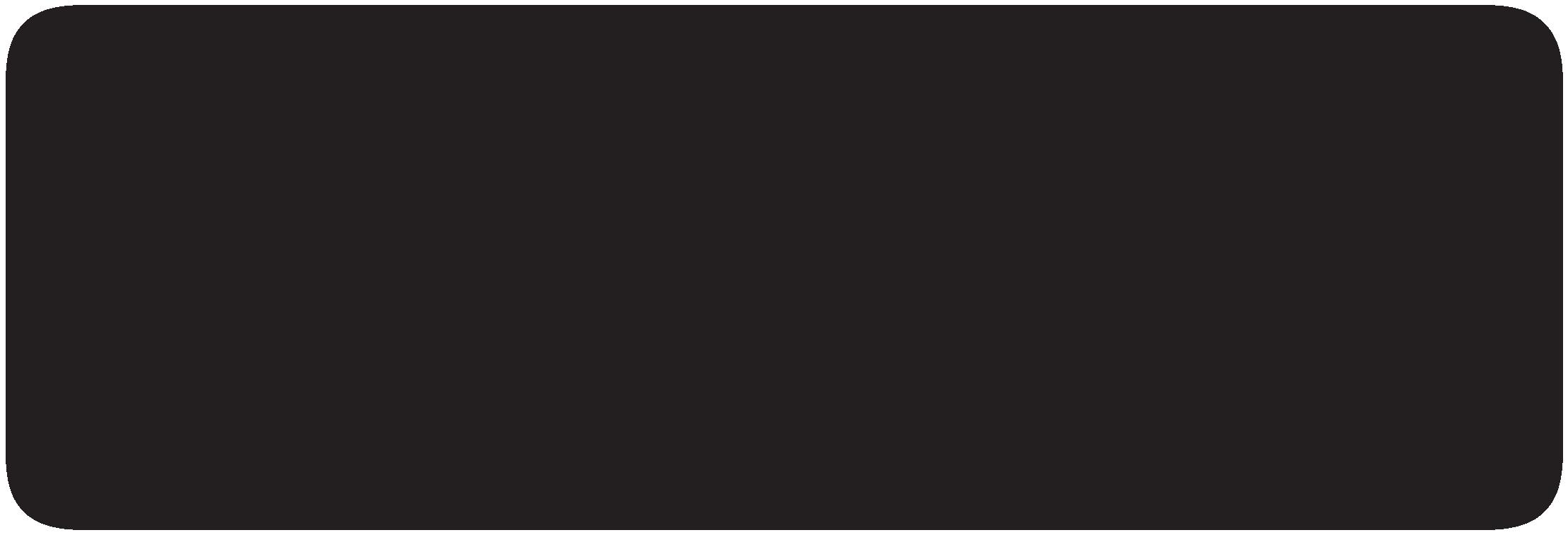
nyloflex® ACE
+ Known in the market as THE digital plate for high quality Flexible Packaging Print
+ Excellent print results even under challenging printing conditions
+ Very good for long clean print jobs (anti-ink filling)


Find the best product for every print job with our Product Selector Tool www.xsysglobal.com
Ferag Australia Pty Ltd Phone: +61 (02) 8336 2700 info-australia@ferag.com
When used in this way, ultrasound has an incredible effect on cleaning the inkjet heads," - Burkhard Wolf, Head of Digital Technology, Business Unit Label
colour shift due to bleeding. UV pinning is therefore an indispensable part of the machine technology for coated papers and plastic films in high-speed digital printing machines.
Cleaning by Purging
The nozzles are often cleaned after contamination by spraying or rinsing with cleaning agents and then vacuuming . However, if more stubborn deposits occur, this is not enough to clean the nozzles. Then the print heads must be flushed from the inside, i.e. ink is pumped through the nozzles to clean them. The ink consumption during such a cleaning process should not be underestimated as up to several hundred millilitres of ink are required per cleaning.
Another reason why print heads need to be flushed is simply due to the different tendency of the ink shades to contaminate them. This sometimes depends on the dyeing components used in the inks. The pigment in violet in particular is difficult to clean, but white ink with its titanium dioxide content also makes cleaning the print bars more difficult. This is because the pigments in these inks tend to adhere to the silicon surface of the print bars and cannot be removed by rinsing. Often, they can only be removed by physical cleaning by hand, which carries the risk of damaging the printheads.
Innovative Cleaning System
Burkhard Wolf describes the unsatisfactory situation of the operator having to manually clean such a sensitive machine part by touching it as the starting point for the new development of an efficient and gentle cleaning system for the Gallus One. The system was developed in cooperation with HEIDELBERG in an extensive series of tests, in which the cleaning effect of rinsing supplemented by ultrasonic cleaning was investigated.
In ultrasonic cleaning, the cleaning liquid is set into vibration. "When used in this way, ultrasound has an incredible effect on cleaning the inkjet heads," says Burkhard Wolf, summarizing the test results. Once the endurance tests have been completed, this patented cleaning method will now be used in the production machines.
Cleaning process
In the build concept of the Gallus One, the print bars are fixed, which is a fundamental and patented innovation of the entire printing unit of this digital press. At the start of a cleaning cycle, the archshaped print table automatically moves down together with the substrate. The cleaning unit then slides out, consisting of a drawer arch on which the cleaning boxes for each printbar are located.

For cleaning, the cleaning boxes with basic cleaning and ultrasonic cleaning unit move under the firmly mounted print heads (semi-transparent visible). (Source: Gallus Ferd. Rüesch AG)

The Gallus One has two intensity levels to clean the
During basic cleaning, which takes place when the Gallus One is started up and shut down and at regular intervals inbetween, cleaning fluid is rinsed onto the print bars in the cleaning boxes and then extracted.
In extended cleaning with ultrasound, a generator stimulates the cleaning fluid at a frequency optimized in a long series of tests, causing it to vibrate and thus gently and thoroughly clean the nozzle plate of ink components, including the polymerized ink residues on the nozzles. Cleaning is carried out exclusively from

In addition to the rinsing unit (flood bath), the cleaning (Source: Gallus Ferd. Rüesch AG)
the outside of the print heads, completely eliminating any ink consumption by flushing the nozzles. This pioneering, patented cleaning process also means that no ink needs to be disposed of after cleaning.
Cleaning intervals
Since the degree of contamination of the print bars depends on the scattered light emitted by the pinning modules, the cleaning intervals are based on the power with which they are operated. The performance itself is a retrievable measurement variable that is used correlatively to control the cleaning intervals and is therefore not based, as is so often the case, on assumed cycles with a corresponding safety buffer.

Print Innovation Asia Issue 3 2024 50

the print bars. (Source: Gallus Ferd. Rüesch AG)
The Gallus One, on the other hand, is an intelligent forced cleaning system that, in addition to the basic parameters, also takes into account the remaining running meters of an attached roll and offers a number of advantages that significantly increase the efficiency and productivity of the printing process. For example, the cleaning intervals are controlled so that they occur as rarely as possible, entirely
within the intuition of the operator, who combines upcoming cleaning with job or role changes.
The example of cleaning intervals also shows the high level of standardization of the processes and the reproducible processes based on them, which lead to high machine availability and low downtimes.

cleaning box has an ultrasonic unit that removes stubborn deposits.

Ink Consumption in Practice
The digital printing systems on the market offer the option of specifying the ink requirement for a job to be printed. This provides transparency about ink requirements and ink costs during the calculation. However, it is often not clear that such calculations only refer to the calculation of ink costs for the job in question.
However, this approach is not sufficient for actually determining the total operating costs of a digital printing press, as the ink consumption for flushing the nozzles is added to the ink coverage. This is not insignificant. Evaluations show that around 20% of ink for flushing the nozzles must be added to the calculated ink consumption for ink coverage.
Uwe Alexander, Product Manager Digital at Gallus Ferd. Rüesch AG, summarizes the advantages of the newly developed cleaning system as follows: "Thanks to its innovative cleaning concept, the Gallus One consumes up to 20% less ink than comparable inkjet printing systems on the market, as there is no need to flush the heads with ink.”
This also has an impact on the total cost of ownership of a digital printing system. Assuming a monthly ink consumption of 200 litres for a digital printing system, this results in a linear annual ink requirement of 2’400 litres. At a price per liter of EUR 60 on the market, this represents costs of EUR 144’000 per year for a UV printing ink system. If these costs can be reduced by 20%, the ink consumption costs are only EUR 115’200/year.
This corresponds to a saving of EUR 28’800/year in operating costs. Calculated over five years, this amounts to EUR 144’000 and reaches a level that becomes an investment-relevant criterion when investing in a digital printing system. Such an approach makes Dr. Burkhard Wolf's clear "yes" to the impact of cleaning costs on the total cost of ownership transparent and comprehensible.
While the Gallus One uses almost 100% of the ink for ink coverage in print jobs, comparable inkjet digital printing systems lose around 20% of the ink during cleaning which then has to be disposed of. (Source: Gallus Ferd. Rüesch AG)
Print Innovation Asia Issue 3 2024 51
“Simple, smart, cost-effective and 100% reliable”
“Simple, smart, cost-effective and 100% reliable” is the verdict of Spanish flexo tradeshops Magnegraf, Barcelona, and sister company, Prepack, Murcia, on the Shine LED Lamp Kit, innovated by Miraclon as a straightforward retrofit upgrade to existing fluorescent exposure frames.
Juan Mesa, Manager of Magnegraf and Prepack, says Shine LED has provided the companies with a low-cost, easy-toinstall path from fluorescent exposure to the multiple benefits of LED exposure. “Exposure times are shorter and energy consumption is lower — which are both very welcome gains. However, for me the most important benefit of switching has been the consistent, repeatable exposures that come with the Shine LED Lamp Kit. We have built our business on guaranteeing customers high-quality FLEXCEL NX Plates, and Shine LED makes this even easier. Installation was also very fast — we were up and running within three hours!”
Consistent plate-to-plate exposure is possible because Shine LED lamps
do not degrade but instead maintain a constant intensity over time, both lampto-lamp and throughout each individual lamp. Says Juan Mesa: “Fluorescent tubes fluctuate, so we regularly had to check plate exposure against the target plate. On a 10-hour shift we might have to adjust exposure and reprofile the unit three or four times, and chasing the correct exposure makes maintaining consistent plates more difficult and takes time. With Shine LED, the quality control almost takes care of itself. We have total confidence in the plates we’re producing, and so do our customers.”
No warm-up speeds exposures
Exposure times with Shine LED lamps are between 10% and 20% faster, in part because LED lamps do not need to warm

up before or cool down after platemaking. “This instant warm-up and cool-down have made us more productive,” says Juan. He adds that Shine LED lamps also makes production more sustainable by cutting wastage in the form of defective plates, reducing power consumption and increasing the life of lamps significantly — LED lamps last up to six times longer than fluorescent tubes.
Long-time user
Magnegraf, Barcelona, is a long-time user of the FLEXCEL NX System from Miraclon, having been the first company in Spain to install FLEXCEL NX Technology in 2010, and the same technology at Prepack, Murcia, when it opened in 2018. Today both companies have identical FLEXCEL NX Wide 4260 Systems, and both upgraded their exposure units with a Shine LED Lamp Kit. “These give us a lot of production flexibility,” says Juan, “because if we have to switch jobs between Barcelona and Murcia we know that exposures will be consistent across both.” Both companies are 100% FLEXCEL NX plate producers, providing what Juan Mesa describes as “broadband flexo plate services”. At Magnegraf the focus is on high-quality narrow-web label applications, while Prepack serves wide-web packaging customers.
“A succession of smart innovations”
Juan Mesa describes the Shine LED Lamp Kit as “another innovation in the Miraclon tradition of steadily improving what’s possible with flexo.” He adds that “all these advances share similar characteristics — they’re smart, and simple. We looked at other routes to move to LED exposure, but they called for very significant investment and fundamental changes to how we work. In contrast, Shine LED is lower cost and means we can keep our existing units.”
Print Innovation Asia Issue 3 2024 52

Cut complexity and costs with FLEXCEL NX Solutions.
Simply consistent
Decrease waste and setup with predictable plates
Simply efficient
Increase on-press performance with a robust plate
Simply sustainable
Support sustainable inks and substrates all with the same plate
Simply better
Address your most demanding brand and quality requirements
From prepress to on-press, deliver the efficiencies and productivity needed from your plates to maximize your bottom line.
MIRACLON.COM © 2023 Miraclon Corporation. FLEXCEL is a trademark of Miraclon. The Kodak trademark is used under license from Kodak. 230501
Investing in superior printing solutions for its customers
Contiweb, a specialist manufacturer of web-handling equipment and provider of integrated technical solutions for web offset printing, web inkjet printing and packaging production, is pleased to announce the successful installation of a CDN non-stop unwinder and Digital Fluid Applicator (DFA) remoistener at Lakeside Book Company’s Harrisonburg facility in Virginia. The new equipment will be featured in a production line alongside a HP T490 PageWide press installed in June.
The installation of the CDN non-stop unwinder and DFA remoistener marks a significant milestone in Lakeside Book Company’s commitment to investing in superior printing solutions for its customers. Lakeside Book Company is the largest book printing, binding, and distribution company in North America and adding this state-of-theart equipment to its inventory further enhances operational efficiency, while ensuring continuous production, and consistently high-quality output.
Scott Merrick, Engineering Manager, Digital Press at Lakeside Book Company, says: “After multiple decades of working with Contiweb and its technology, this was an easy decision for Lakeside Book. We are confident that this investment will enable us to optimize the value of our new HP press, delivering numerous benefits to our customers and our operations.”

Contiweb has a long history of providing Lakeside Book Company with reliable and cutting-edge solutions tailored for heat set web offset applications. Its portfolio of Contiweb splicers, sheeters, and dryers has consistently delivered exceptional performance and superior print quality.
Merrick continues: “We purchased our first CDN splicer from Contiweb back in 2017 for our Kendallville, Indiana facility. That splicer has been exceptionally reliable since the day it was installed as we continued on our journey with Contiweb.”
“We are delighted to have partnered with Lakeside Book Company once again to enhance its production capabilities at the Harrisonburg facility,” says Robert Bosman, Sales Director at Contiweb. “The installation of the CDN nonstop unwinder and DFA remoistener,

demonstrates Lakeside Book Company’s commitment to delivering high-quality print solutions. We are proud to support the company’s operations with our advanced web offset solutions, and we look forward to further strengthening our partnership in the years to come.”
Local production, sales and technical service bring ACTEGA closer to its customers
ACTEGA, manufacturer of specialty coatings, inks, adhesives, sealants and compounds for the print and packaging industry has announced a contract manufacturing arrangement with ELANTAS Beck India Limited (EBIL). ACTEGA is producing its high-quality WESSCO® UV-curing coatings at this local, state-of-the-art site, further strengthening its capabilities to meet the needs of the Indian flexible packaging market.
The local production, sales and technical service bring ACTEGA closer to its customers and thus also shorten their delivery times. With this move, ACTEGA has reinforced its market position, elevated its already high standards in customer service, and is set to seize new growth opportunities.
Thomas Sawitowski, Senior Vice President Flexible Packaging at ACTEGA said “In 2020, ACTEGA acquired the Swiss-based company Schmid Rhyner (now ACTEGA Schmid Rhyner), which significantly expanded our range of UV coating products. From discussions with our customers, we understand that there is a strong demand for this range of coatings to be produced
Print Innovation Asia Issue 3 2024 54
locally in India. With this facility, we have acted on this valuable market feedback and made a significant step towards being able to offer “made in India” UV coatings.”
ACTEGA has already been active in the Indian market for many years with its three business lines Flexible Packaging, Paper & Board and Metal Packaging Solutions. The contract manufacturing arrangement between ACTEGA and EBIL, a sister company of ACTEGA within the ALTANA Group, enables ACTEGA to leverage EBIL’s existing infrastructure.
Srikumar Ramakrishnan, Managing Director of ELANTAS Beck India said, “We’re delighted to work as a contract manufacturer for ACTEGA to ensure that its global and high-quality requirements are met in every aspect of the production process. As an integral part of technology transfer, we have a local production facility, including a quality control laboratory. This allows us to ensure consistent quality, whether the product is manufactured in Switzerland, as it was before, or in India now.

Furthermore, the recent audit carried out by a prominent global packaging manufacturer, headquartered in India, has affirmed our adherence to the most stringent standards.”
Peter Zwankhuizen, Senior Vice President and Head of Asia at ACTEGA, concluded, “At ACTEGA, we’re committed to providing customers with the highest quality products and services, and the local production facility in India through EBIL is a testament to that commitment. With this move of contract manufacturing arrangement with EBIL, we are confident that ACTEGA is well-positioned to continue to deliver exceptional solutions and exceed the expectations of our customers in India and beyond.”
Local production, sales and technical service bring ACTEGA closer to its customers
ACTEGA, manufacturer of specialty coatings, inks, adhesives, sealants and compounds for the print and packaging industry has announced a cont
BOBST industry vision becomes
reality by addressing customer needs
In 2020, we set out the BOBST industry vision of ‘shaping the future of the packaging world’, with connectivity, digitalization, automation and sustainability as its pillars. Since then, the world has faced an unprecedented pandemic, global conflicts, and extraordinary pressures on the industry due to various factors including the global economy, global supply chains and resource shortages.
Meanwhile, brand owners and converters are under more pressure than ever from changing market expectations. They face many challenges, like shorter time-tomarket, smaller lot sizes and the need to build consistency between physical and online sales.

Print Innovation Asia Issue 3 2024 55
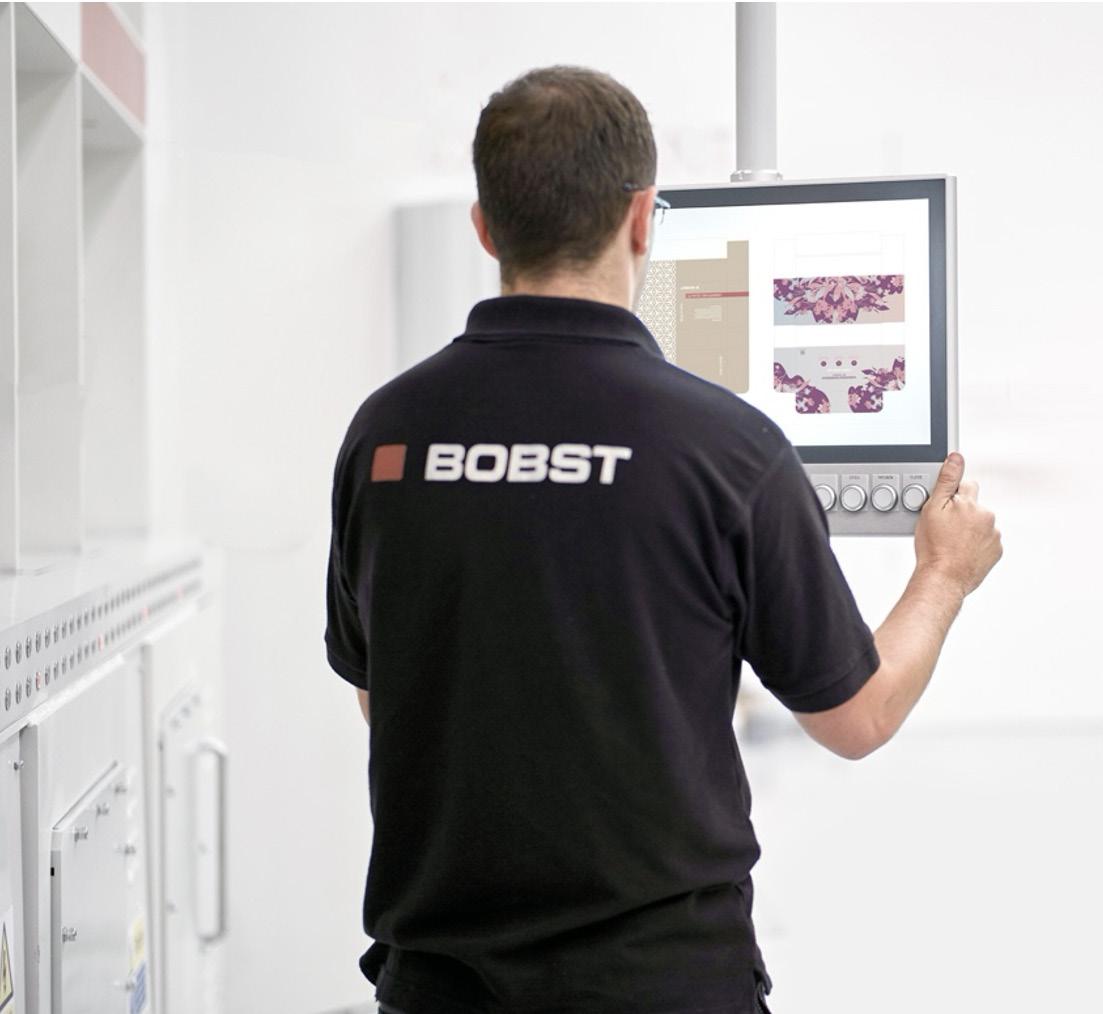
It’s a fast-moving environment, but for BOBST, the vision has remained stable and consistent throughout. If anything, global events in recent years have reinforced the approach we are taking. As we look ahead to drupa 2024, our vision is continuing to progress at pace. So, where are we up to? And what does it mean for the industry as a whole?
Connecting the packaging value chain
We have made progress towards our vision in recent years, offering a steady transformation for the packaging industry, and for our product lines and services.
Until now, the packaging value chain has remained very fragmented, which causes too many errors and too much waste in the operations of printers and converters.
Our vision is supporting this transformation by moving the industry from a mechanical to a digital world and from manufacturing machines
to process solutions along the entire workflow. Together with our clients, we want to transform the packaging value chain from a series of isolated silos to a connected end-to-end overview.
At the heart of this transformation is BOBST Connect, our constantly evolving, cloud-based digital platform that enhances and improves packaging productivity.
BOBST Connect brings data and digital services together in one fully connected platform, with BOBST machine insights and expertise built-in, enabling overview and orchestration of the production process. BOBST Connect is constantly evolving, so it serves our customers both now and in the future.
At the same time, we are shaping the industry in each segment – across labels, flexible packaging, folding carton and corrugated board – to ensure end-to-end connected workflows and continuous innovation in an everchanging environment. We gain insights to sustainably support our customers to answer the current and future consumer needs – and respond to the challenges of brand owners, retailers and e-tailers across a flexible and agile workflow.
Looking to the path ahead
So, what can we expect in 2024? Our journey on the path we are on will continue to gather pace.
Eventually, all the machines and tooling will "talk" to each other, seamlessly transmitting data through a cloudbased platform orchestrating the entire production process with quality control

systems. We are already seeing this, with an increased interest in data usage from PDF to twin PDF, job recipe, machine learning, AI and using best information throughout the production workflow, end to end.
For companies who embrace this approach, across the whole production workflow, more fact-based and timely decisions will be made, and higher productivity, higher efficiency and lower waste will be a reality.
Meanwhile, BOBST will continue to act as a strategic partner for its customers. A new offer in 2024 is BOBST Application Management, a hands-on innovative consulting service, which is designed for the needs of converters and brand owners. Through BOBST Application Management, customers can receive guidance on technologies, raw materials, processes and business cases along the entire packaging value chain.
So, BOBST’s vision is becoming reality already, despite all the external challenges of recent years. By drupa 2024, we will have even more proof points to demonstrate its impact.
As part of a broader £5 million investment in its book printing division
Landa Digital Printing announces that Bluetree Group, the largest online printing company in the UK, has ordered a second Landa S10P Nanographic Printing® press. The newly purchased B1 digital solution will bolster its operations in luxury and layflat book printing, as well as stitched and perfect bound booklet products – some of the fastest growing segments of the business.
As part of a broader £5 million investment in its book printing division, the new seven-color Landa S10P will significantly enhance Bluetree’s production capacity, with the majority of its work coming from its online trade brand, Route 1 Print. The press will be integrated alongside the existing S10P in the Bluetree workflow allowing a seamless flow from customer upload and approval through to printed sheets on the floor.
According to Bluetree, the selection of
Print Innovation Asia Issue 3 2024 56




Print Innovation Asia Issue 3 2024 57 Brilliant products and services for brilliant print results and business success. PrePress Plates Sleeves & Adapters www.xsysglobal.com Visit us at DRUPA 2024

its second Landa S10P was based on its exceptional print quality and economic advantages, which positions it well ahead of the competition.
James Kinsella, Co-CEO of Bluetree, explains, “The print market is highly competitive and to support the print resellers we serve through Route 1 Print we need to invest to ensure that we can produce at the highest quality and lowest unit cost. The first Landa press has fitted seamlessly into our workflow and has given us a lot more flexibility around what we can offer to our resellers.”
“The area that the Landa is making the biggest impact is in booklet work, perfect bound books for example are printed as blocks and then run through our Kolbus KM600. The Landa has enabled much faster turnarounds as well as opening a wider range of materials that traditionally were only available on litho quantities.”
While most of the work will come from Route 1 Print, the second Landa S10P will also serve Bluetree’s luxury book and brochure printer ‘Kingsbury Press’ – a business acquired in 2021.
“Kingsbury Press produces luxury books which often showcase high end property or luxury products. In the past, Kingsbury has almost exclusively used litho printing to ensure the best possible image reproduction and print quality,” continues Kinsella. “With the business joining the Bluetree Group, Kingsbury has been able to expand its offering utilizing the Landa press.”
“The Landa has enabled Kingsbury to expand its offering and has given a lot more flexibility particularly with shorter run lengths. The new press will take this to the next level with the capability that seven colors offers and what this can bring to the stunning photography that
features in these projects,” said Kinsella. As a result of the purchase of its first Landa S10P, Bluetree established a strong and enduring partnership with Landa and its customer service team.
James Kinsella highlights Landa’s agility and responsiveness to customer feedback as one of the reasons for this, stating “As a smaller supplier, Landa’s R&D team is very agile and responsive. A lot of our operational efficiency is derived from our workflow and high levels of automation which enable us to deliver over twentyfive thousand orders per week.”
“The Landa team have been able to make quick adjustments to the software, enabling seamless integration into our systems and support with further developments when new products have been launched. It’s this approach and ‘can do’ attitude that provided us with the confidence to order a second machine.”
Sharon Cohen, Chief Business Officer, Landa Digital Printing, concludes: “Bluetree Group is an exceptional business with a forward-thinking approach to performance, innovation and customer service. Following its evident success with the first press, we’re thrilled to continue our partnership and support their growth strategy and future aspirations.”

Print Innovation Asia Issue 3 2024 58
24th ENTRY FORM IN NEXT ISSUE

For enquiries : Within Thailand Exposis Co., Ltd Tel (66) 2559 0856-8 info@exposis.co.th Overseas Messe Düsseldorf Asia Pte Ltd Tel (65) 6332 9620 corrutec@mda.com.sg Jointly organized by : 3rd International Corrugated Technology Exhibition For Asia www.corrutec-asia.com BITEC • Bangkok SEP 2025 Unfolding the Future of Corrugated Packaging Book Your Booth Space NOW!

Discover new speeds and continuous feeds. Accelerate your business with the Jet Press 1160 CF’s unrivalled productivity and reliability JET PRESS 1160 CF EXPERIENCE LIGHTNING DELIVERY WITH THE NEW Find out more
















































































































































































































































































